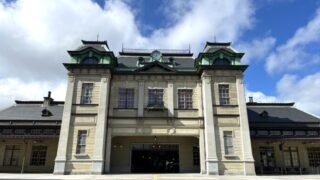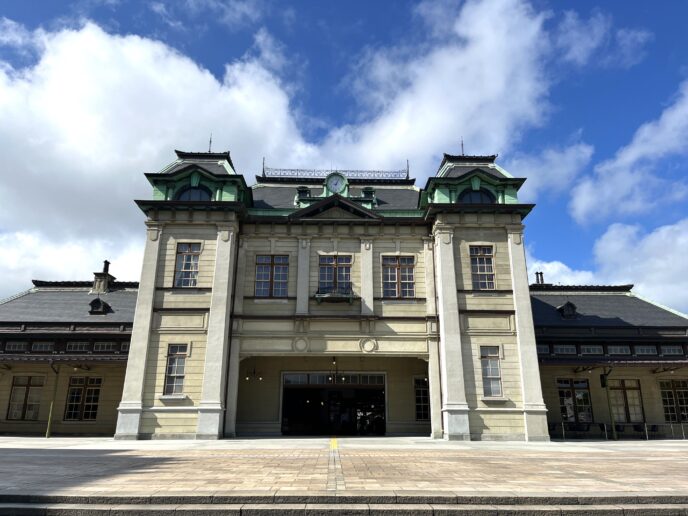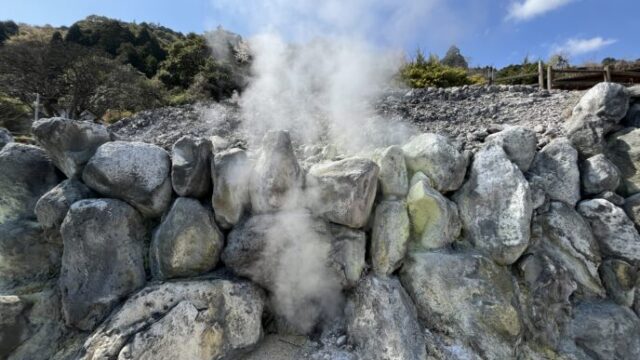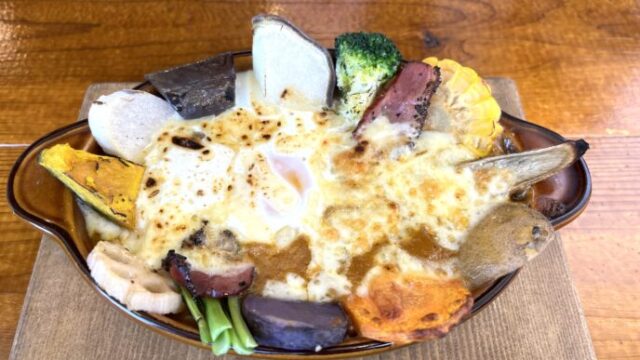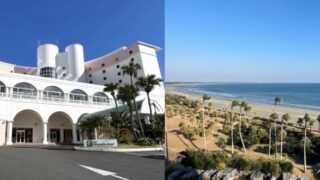Hello! I’m Hitapapa and I love Mojiko retro.
This time we will introduce JR Mojiko Station, arguably the most famous spot for retro tourism in Mojiko!
Mojiko Station, which has been restored to its original building from 1914 (Taisho 3), is impressive with its retro feel.
Mojiko Station is the northernmost station in Kyushu and is home to the “zero mile marker” which marks the starting point of the Kyushu Railway.
There are many tourists taking commemorative photos on the station platform, and young women are posting many of them on Instagram.
Furthermore, Mojiko Station is the first railway station building to be designated as an Important Cultural Property by the nation, and Mojiko Station and Tokyo Station are the only other station buildings designated as Important Cultural Properties .
Within the station, there are also numerous records preserving the history and prosperity of Mojiko Port.
There is also a Starbucks inside the station, which has a very retro feel and is very stylish .
This Starbucks itself has become a tourist attraction.
● The station building has been restored to its original state when it was built in 1914 (Taisho 3). The retro feel of the building is truly impressive.
● The first railway station building to be designated as an Important Cultural Property of Japan
(the only station buildings designated as Important Cultural Properties are Mojiko Station and Tokyo Station)
● The northernmost station in Kyushu. There is a “zero mile marker” marking the starting point of the Kyushu Railway.
● Numerous records of the history and prosperity of Mojiko Port
● The Starbucks in the station is super retro
Now let’s take a closer look at JR Mojiko Station!
I hope this will be of some help to you when you visit Mojiko Retro!
Introducing Mojiko Station, a must-see spot for retro sightseeing in Mojiko
<JR Mojiko Station>
[Address] 1-5-31 Nishikaigan, Moji-ku, Kitakyushu City, Fukuoka Prefecture
The exterior of Mojiko Station
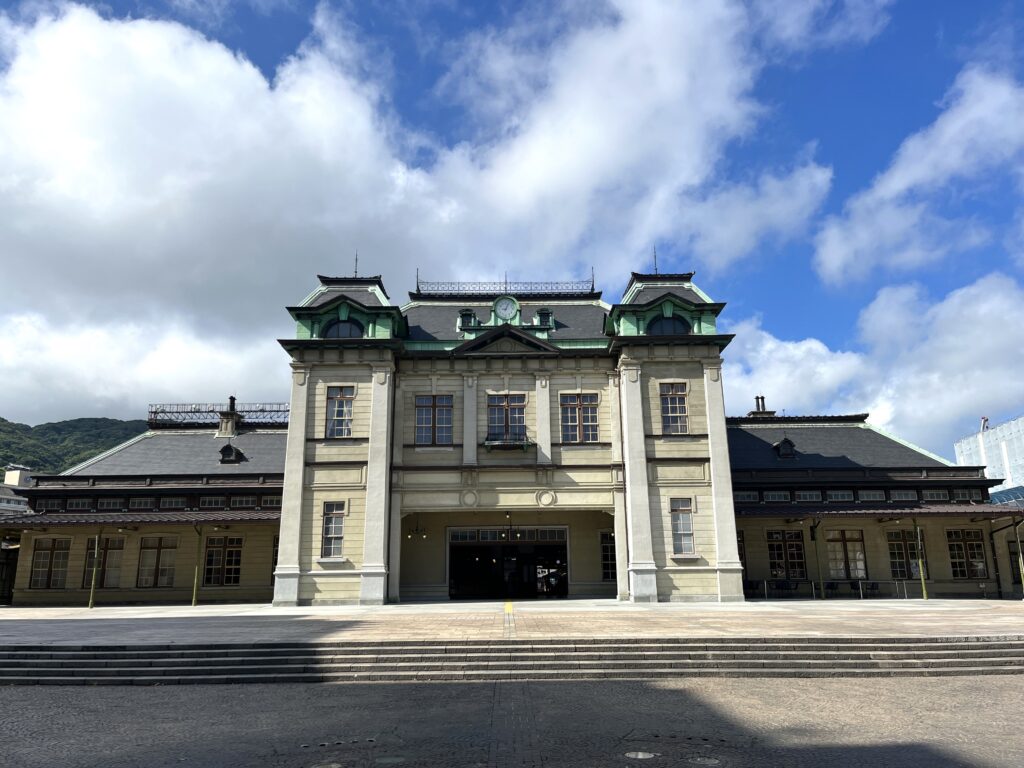
Mojiko Station, which has been restored to its original building from 1914 (Taisho 3), is a spectacular sight with a retro feel.
After six years of restoration work, the station building was restored to its original form in 2019.
The Showa-era station building before its restoration was also beautiful.
A beautifully symmetrical Renaissance style building.
Many tourists take photos of the station building from this angle, directly in front.

There is a large fountain square in front of the station.
At certain times, the fountain in the center of the square comes on, and in the summer, children get soaked playing in the water (laughs).
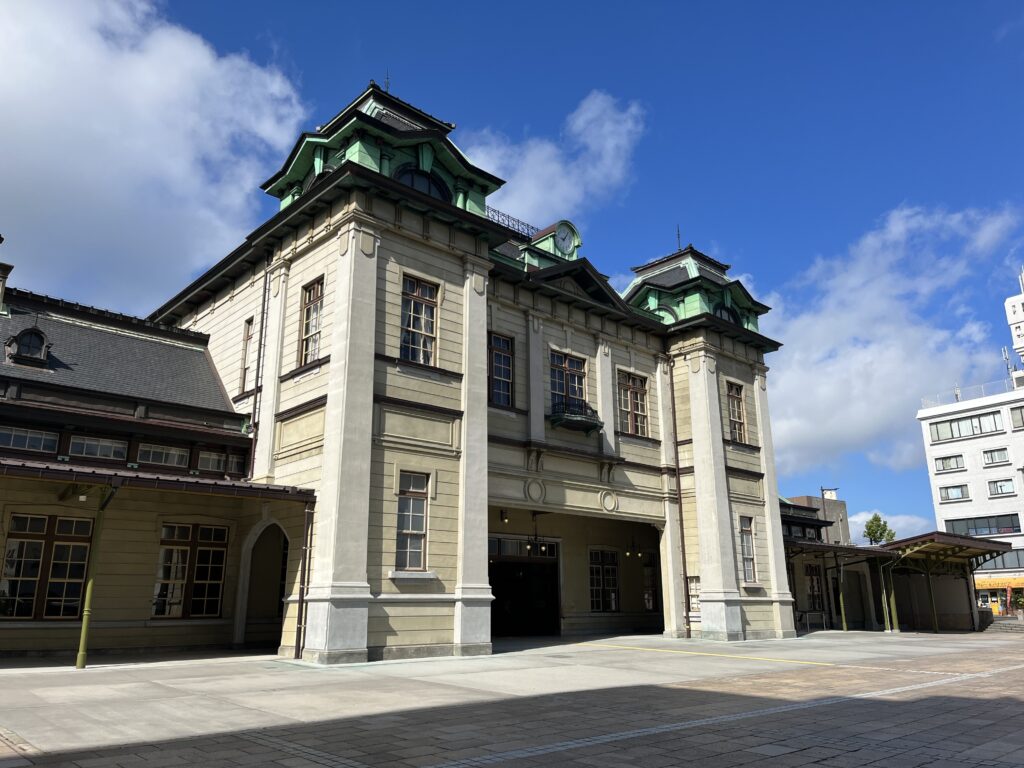
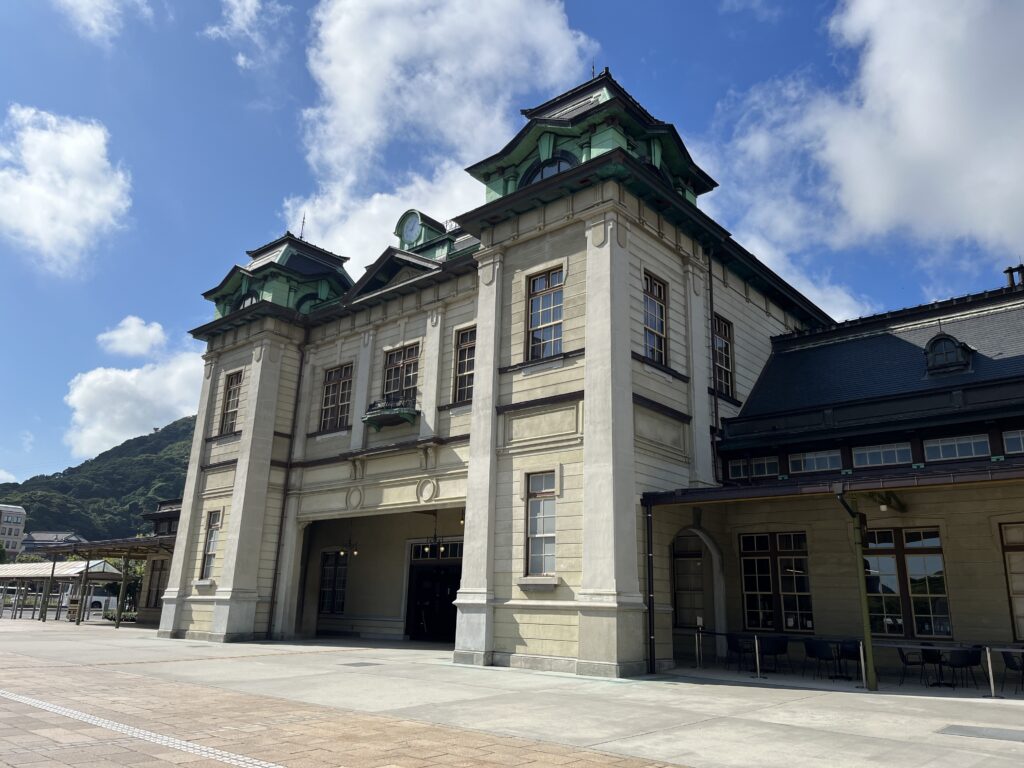
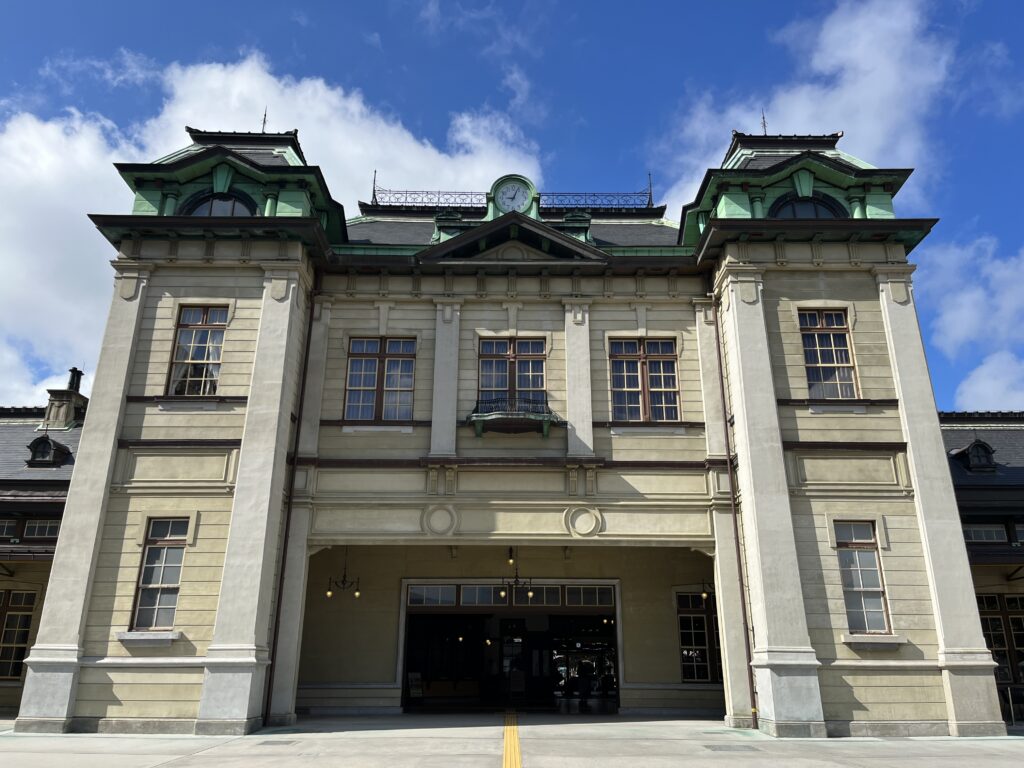
The station building is a stunning example of Taisho-era retro style from any angle.
It’s beautiful from afar or up close.
Every detail, including the station building’s walls, has been restored to its original appearance.
A magnificent station building with a strong sense of grandeur
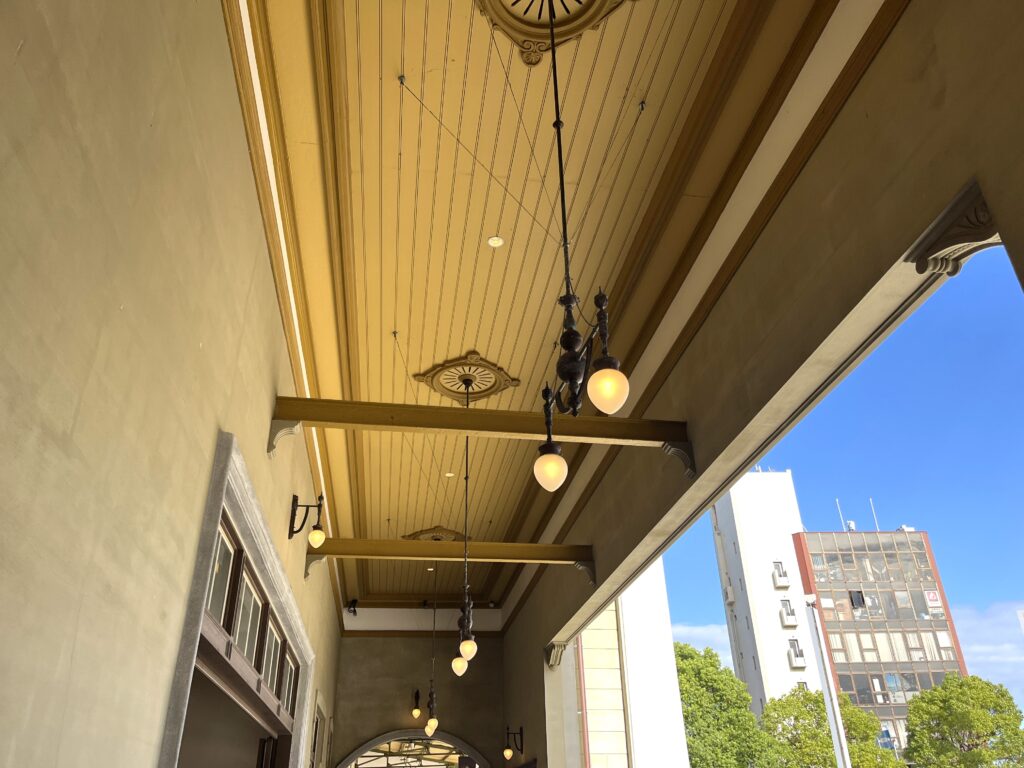
The ceiling and lighting have also been restored to their original state.
It has a Western-style atmosphere with a retro feel.

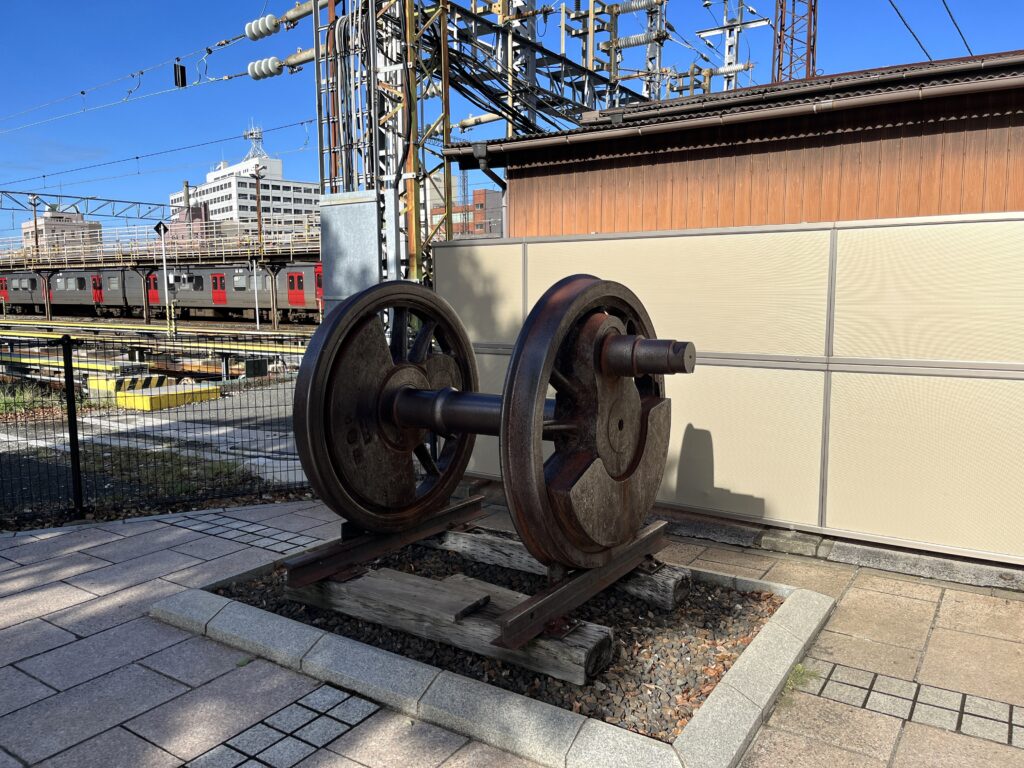
Station Hall

The station hall has a solemn atmosphere.
The station building has been restored to its original appearance in the early Taisho period, down to the smallest detail, including the floors, ceilings, and lighting.
The ceiling and lighting in particular look gorgeous.
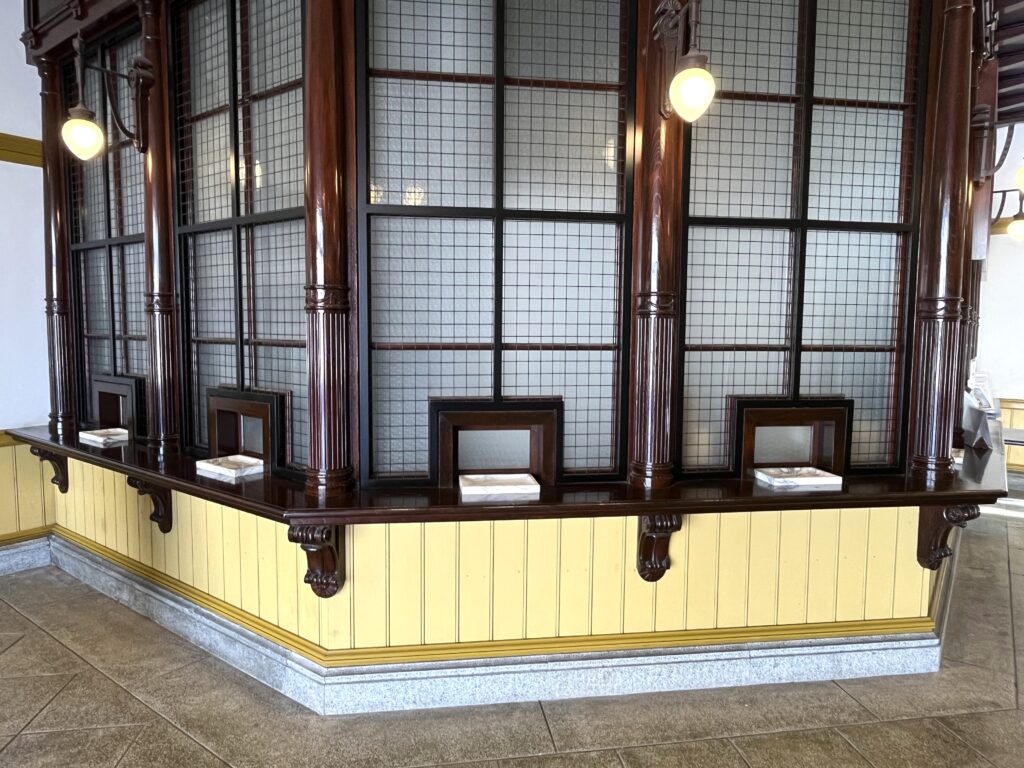
The ticket sales window at that time.
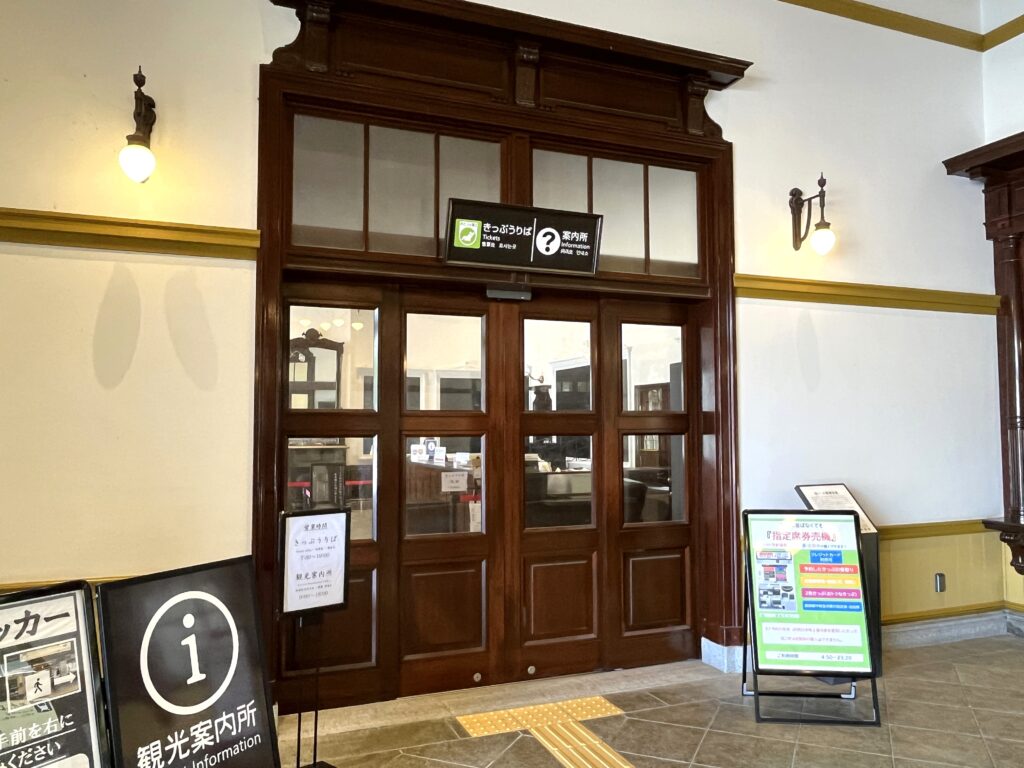
The ticket office (green window) also has a heavy wooden entrance that remains the same as it was back then.
The floor is made of stone and the doors are made of heavy wood.
Starbucks Mojiko Station
Inside the station, there is a Starbucks in the space that used to be the “old third-class waiting room.”
(In the past, the waiting room was separated into first, second and third class.)
This Starbucks takes advantage of the retro character of Mojiko Station and has a really cool and stylish atmosphere!!
This Starbucks has already become a tourist attraction , so it’s a great place to stop by for a break.
There is an article that goes into detail about the Starbucks at Mojiko Station, so please read it!
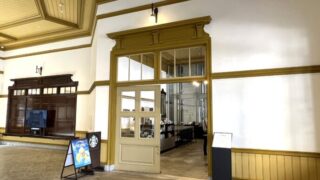
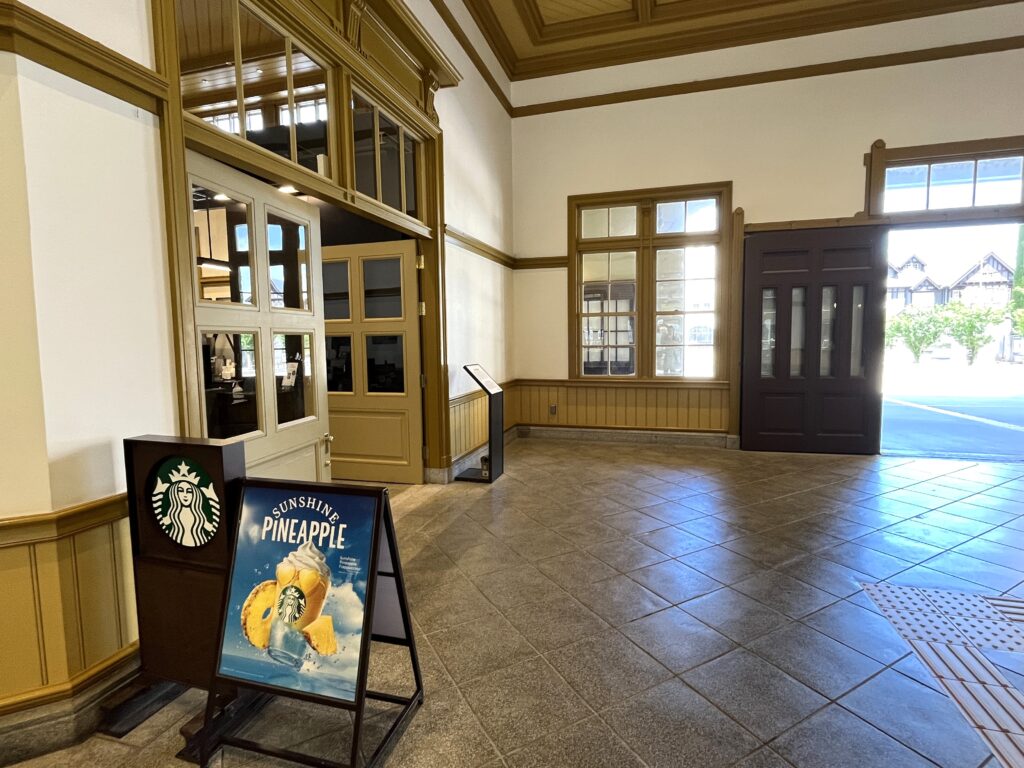
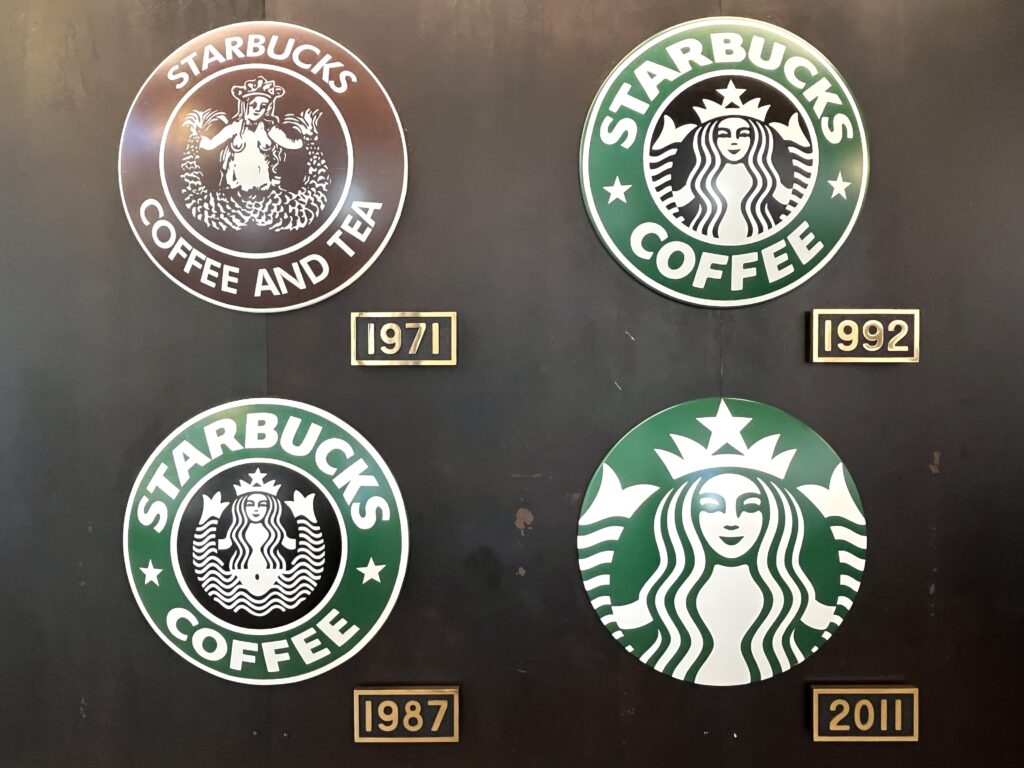
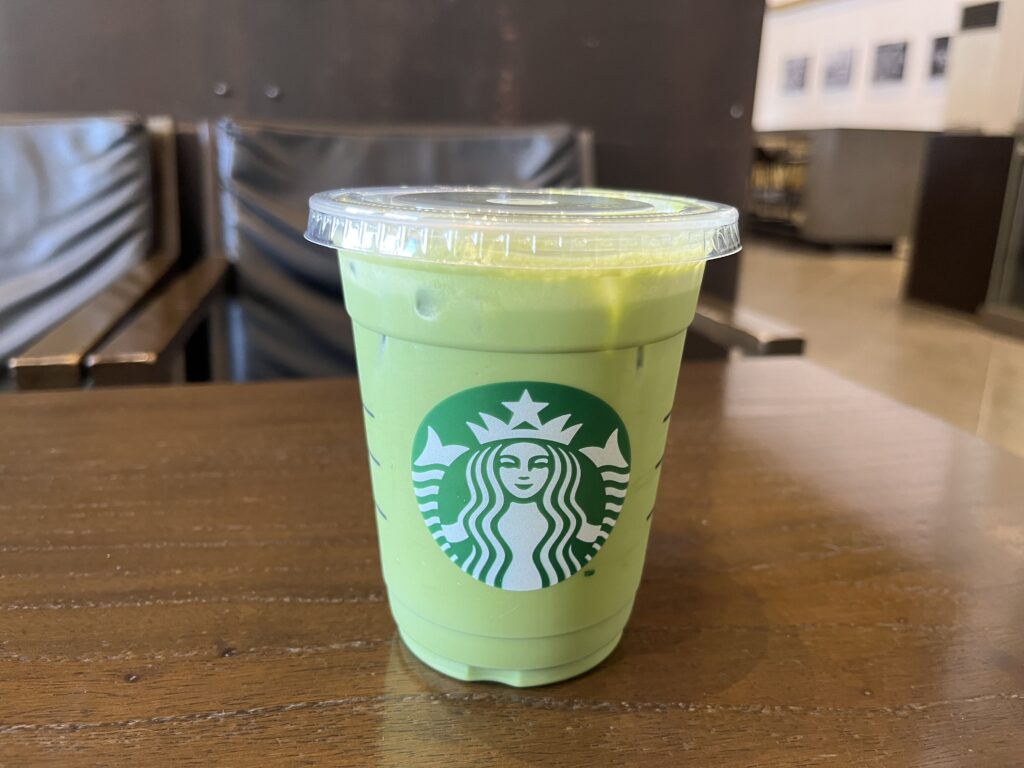
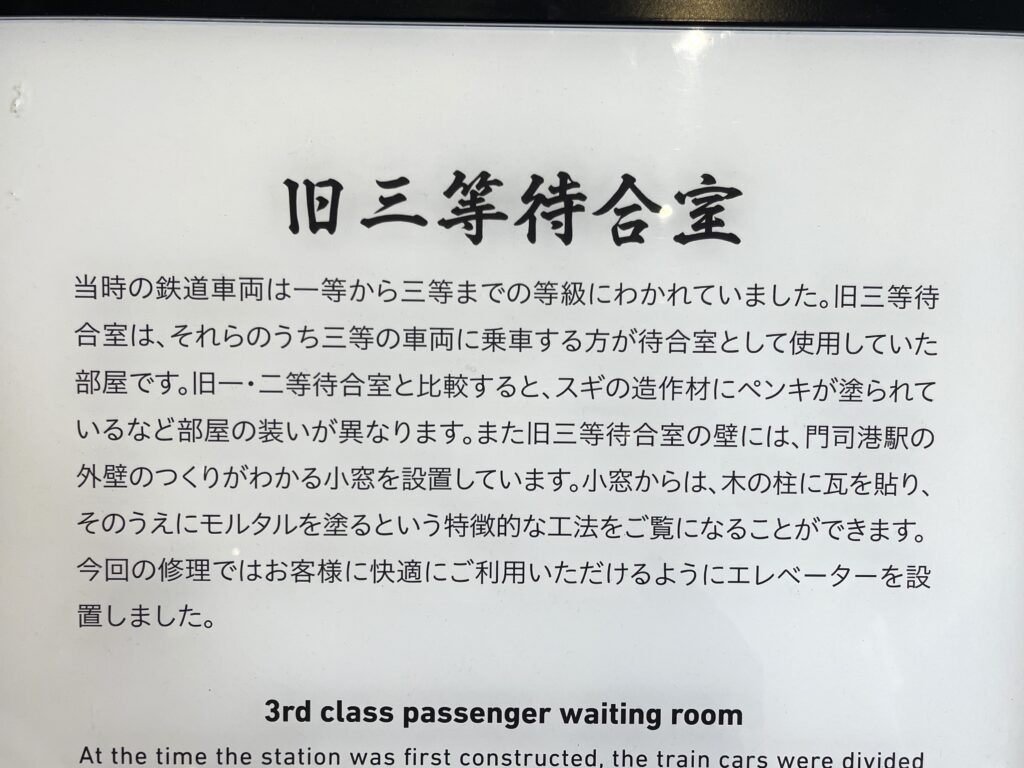
Be sure to stop by the Starbucks at Mojiko Station!
Near the ticket gates and platforms

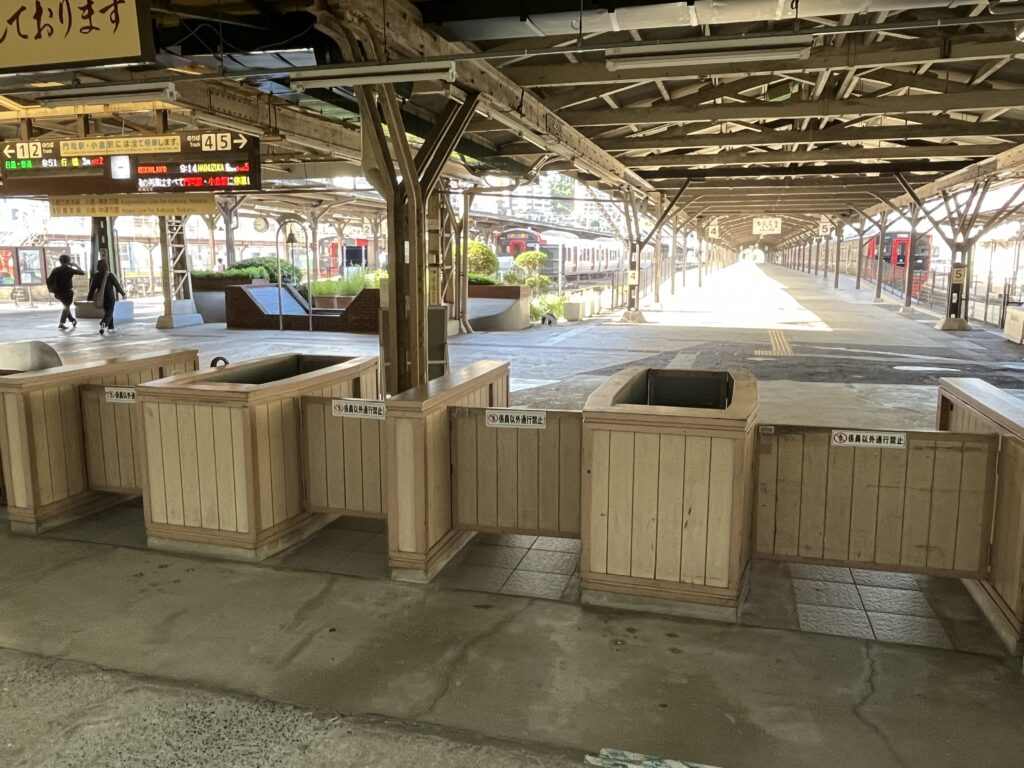
The ticket gates from that time have also been restored.
Currently, only the automatic ticket gate next to it is in use, but back then, station staff would issue tickets at this retro ticket gate.
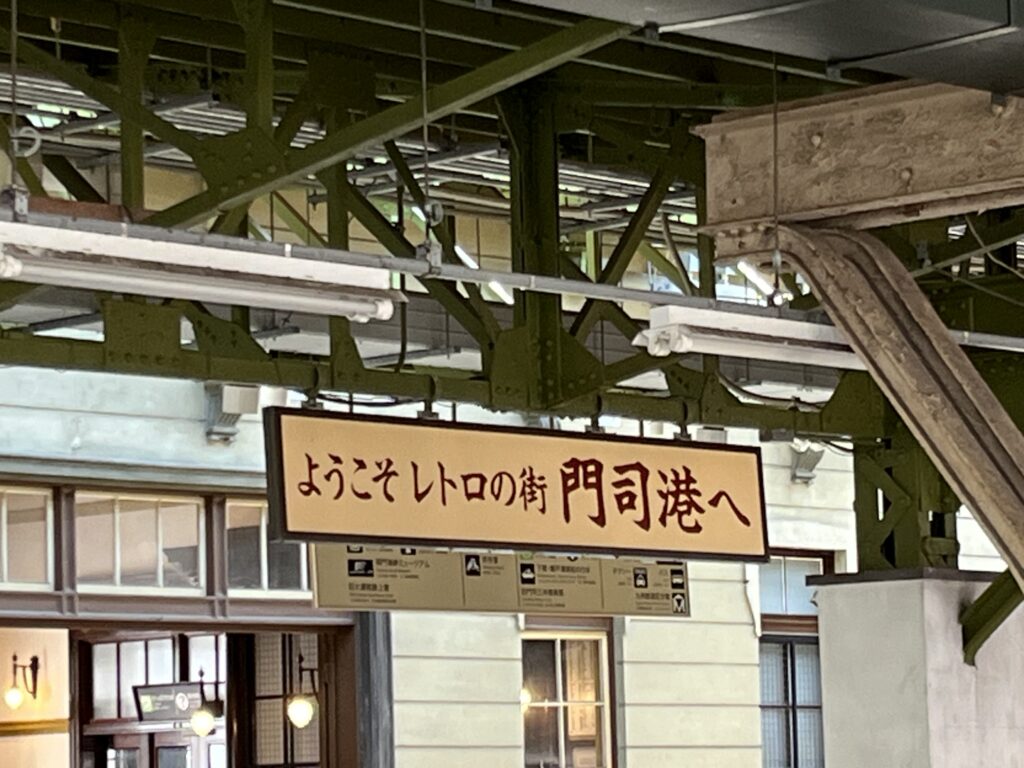
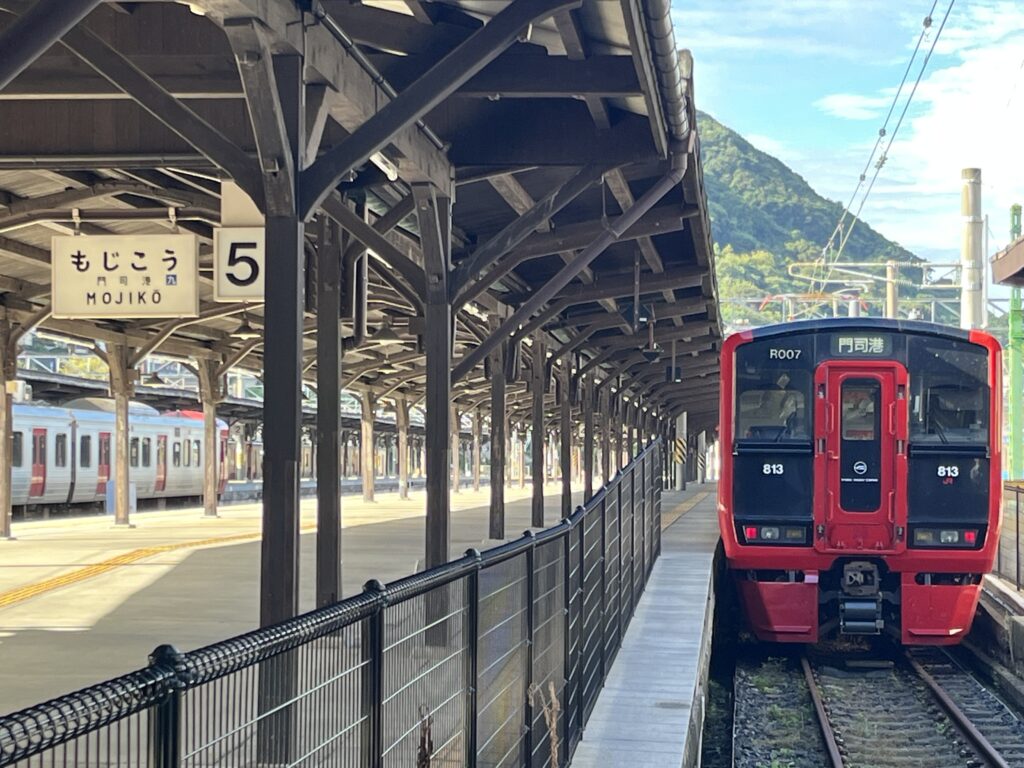
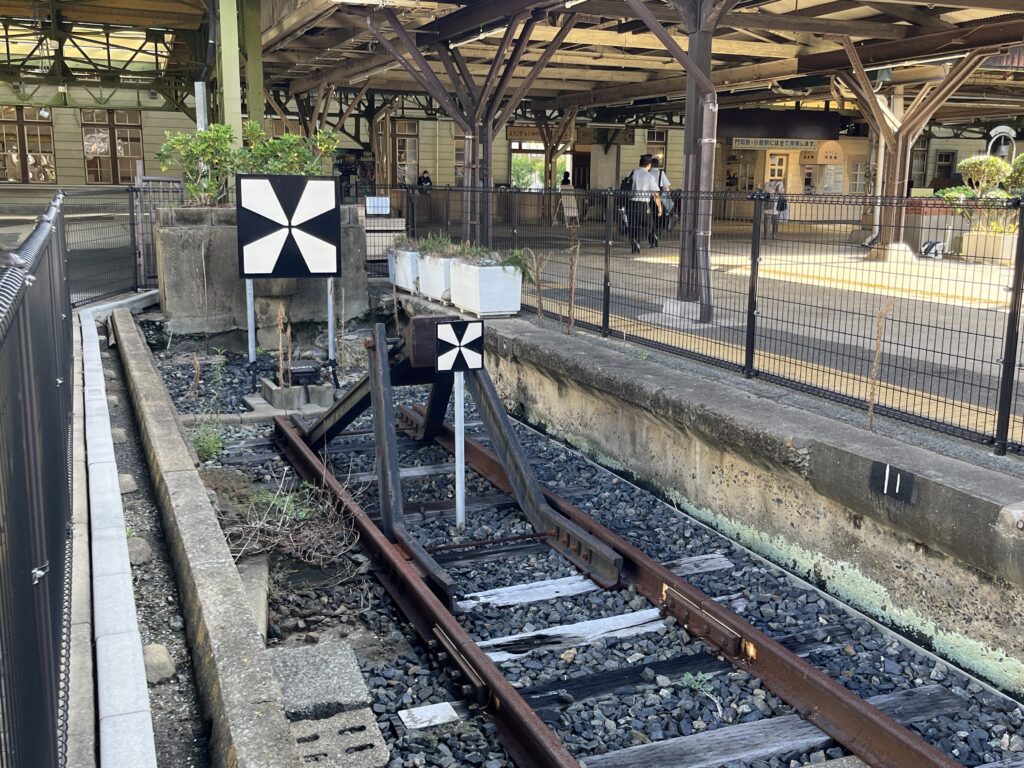
Mojiko Station is the northernmost station in Kyushu, and is also home to the “zero mile marker” marking the starting point of the Kyushu Railway.
As this is the northernmost terminal station in Kyushu, the tracks end here.
When I was a child, I would look at Mojiko Station and think, “It doesn’t continue!” in response to the song, “The train goes on and on, no matter where you go.” (laughs)
The tracks end at Mojiko Station.
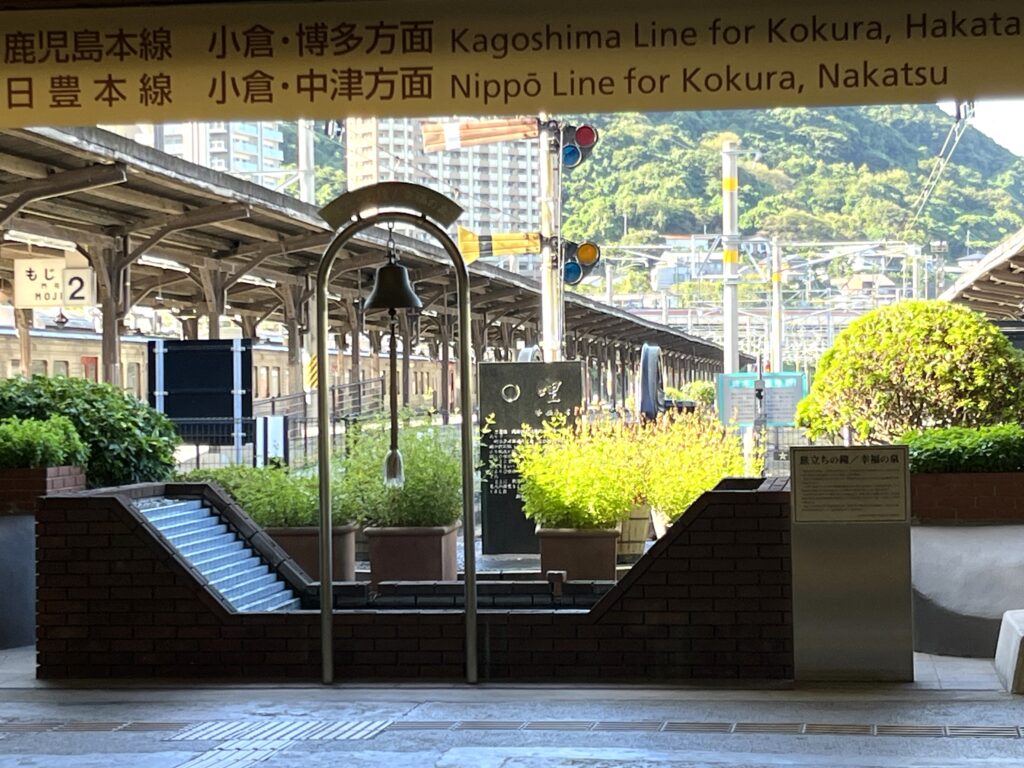
“Departure Bell”.
When the station building was completed in 1914, it was commissioned as the “departure signal bell,” and in the Showa era it watched over travelers as the “safety bell,” before being revived in 2009 as the “departure bell.”
When the bell is rung, a loud “ding-dong” sound echoes throughout the station.
Let’s ring the “Departure Bell” ♪
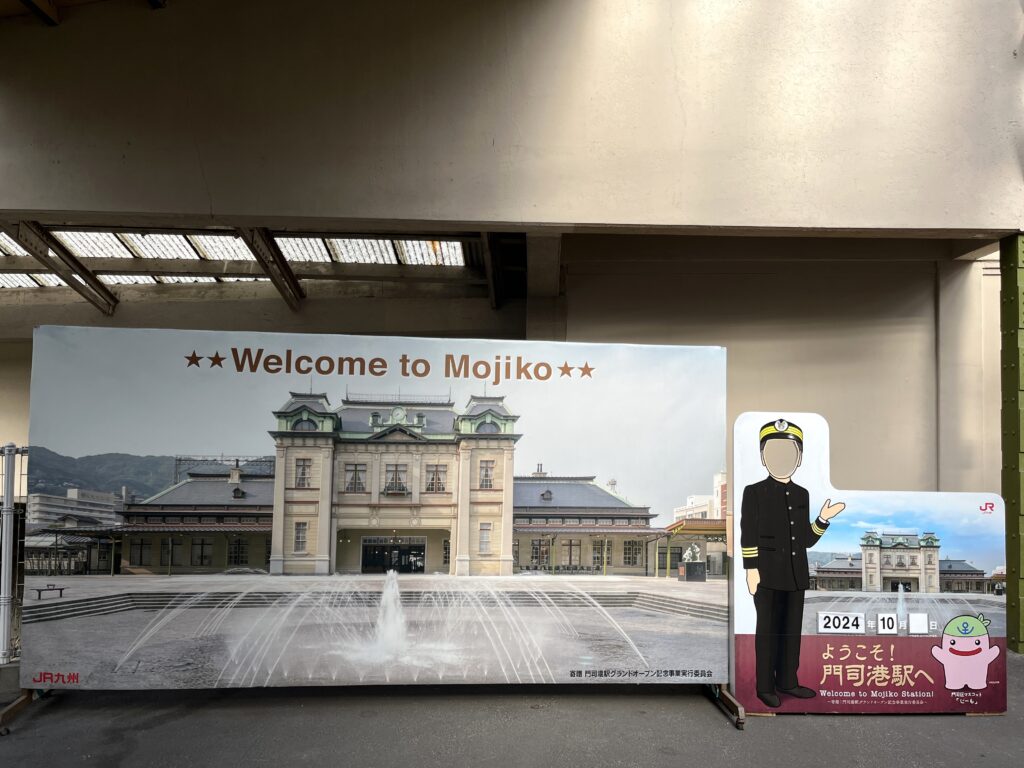
While you’re there, why not take a commemorative photo with the large Mojiko Station panel?
Waiting room
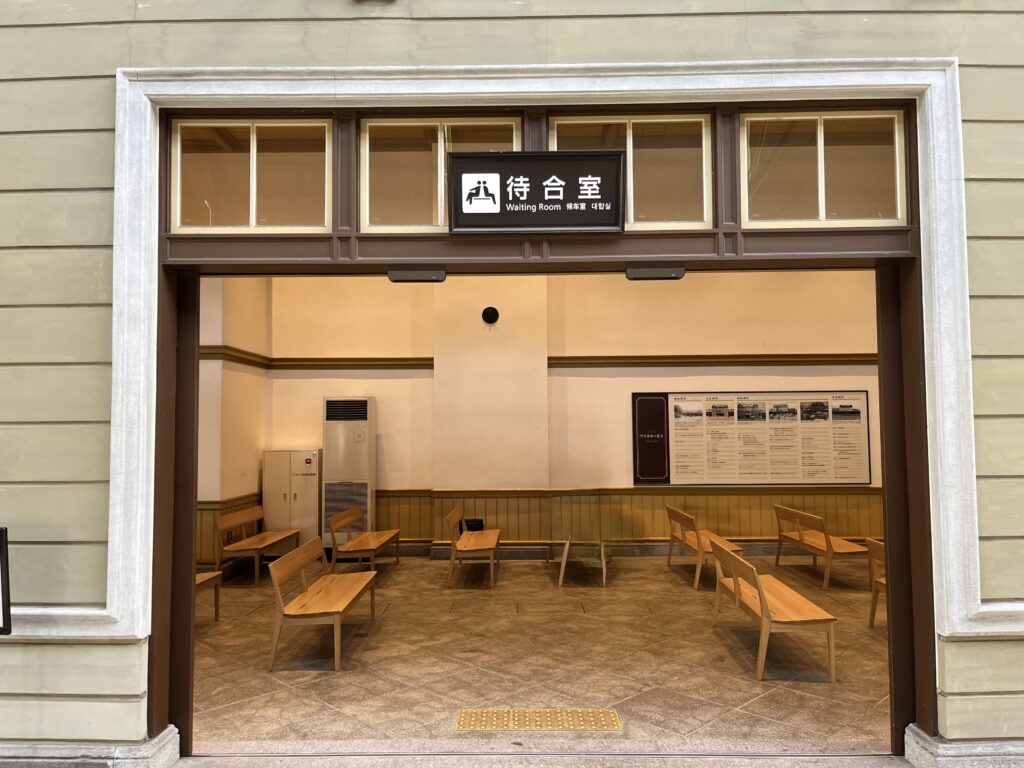
This is the waiting room, restored to its original appearance in the Taisho period.
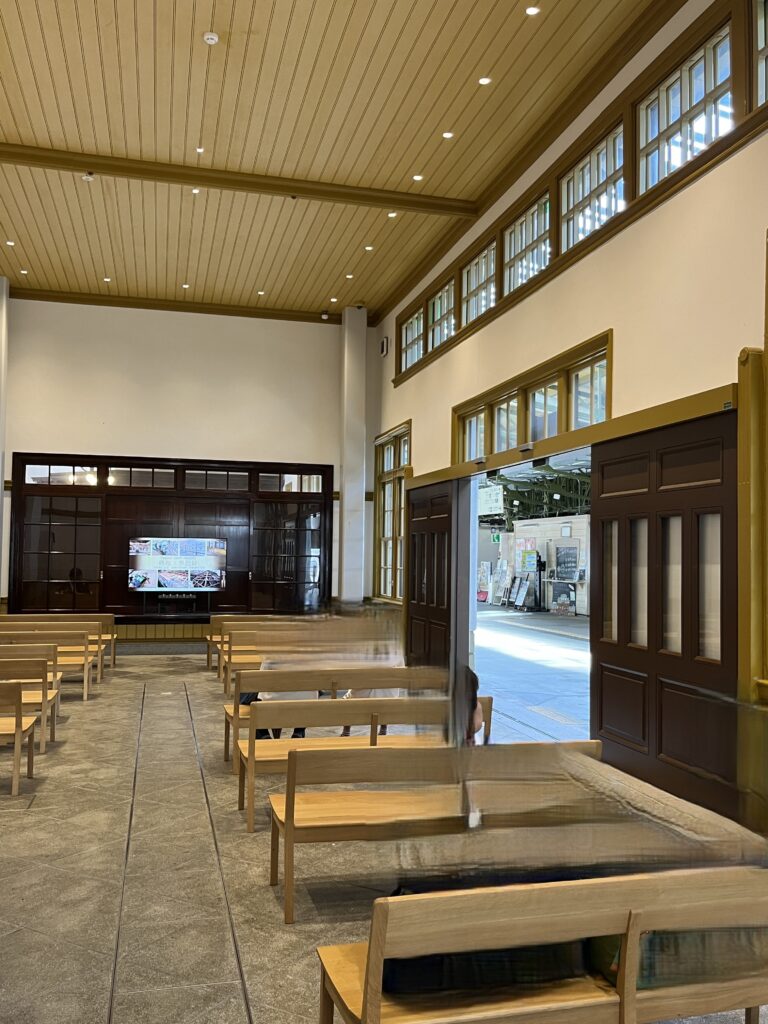
The ceiling, windows and doors are edged in gold, giving it a gorgeous feel.
The floor is made of stone.
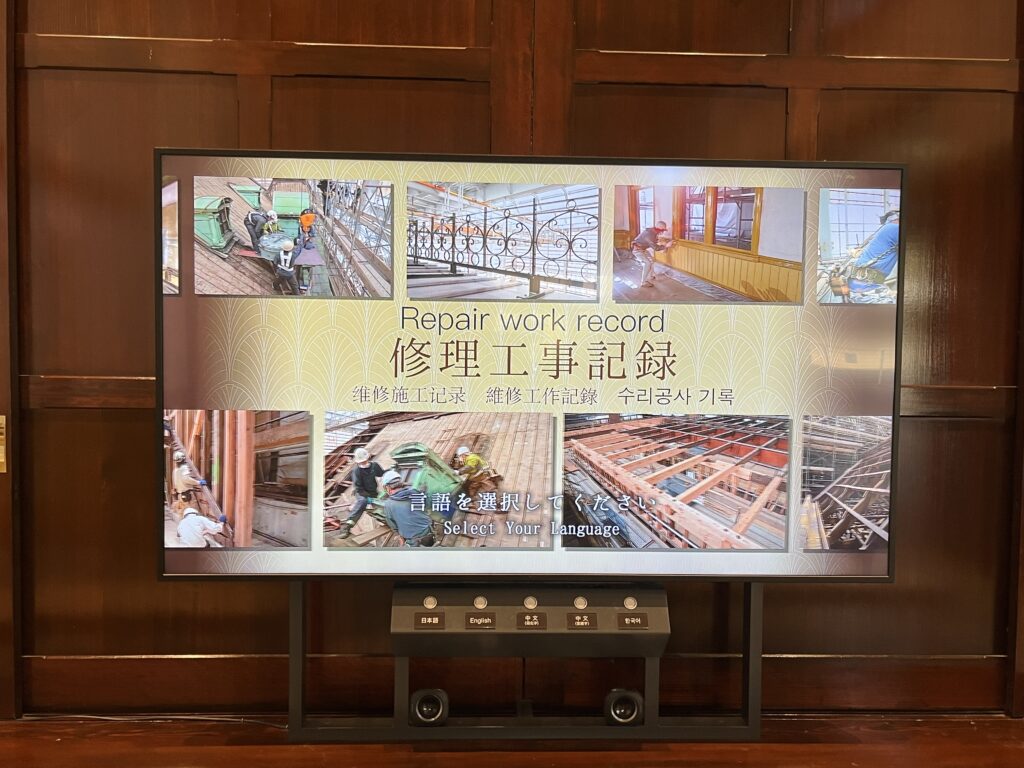
You can watch a video documenting the restoration of Mojiko Station, which took six years to restore to its early Taisho era station building in 2019.
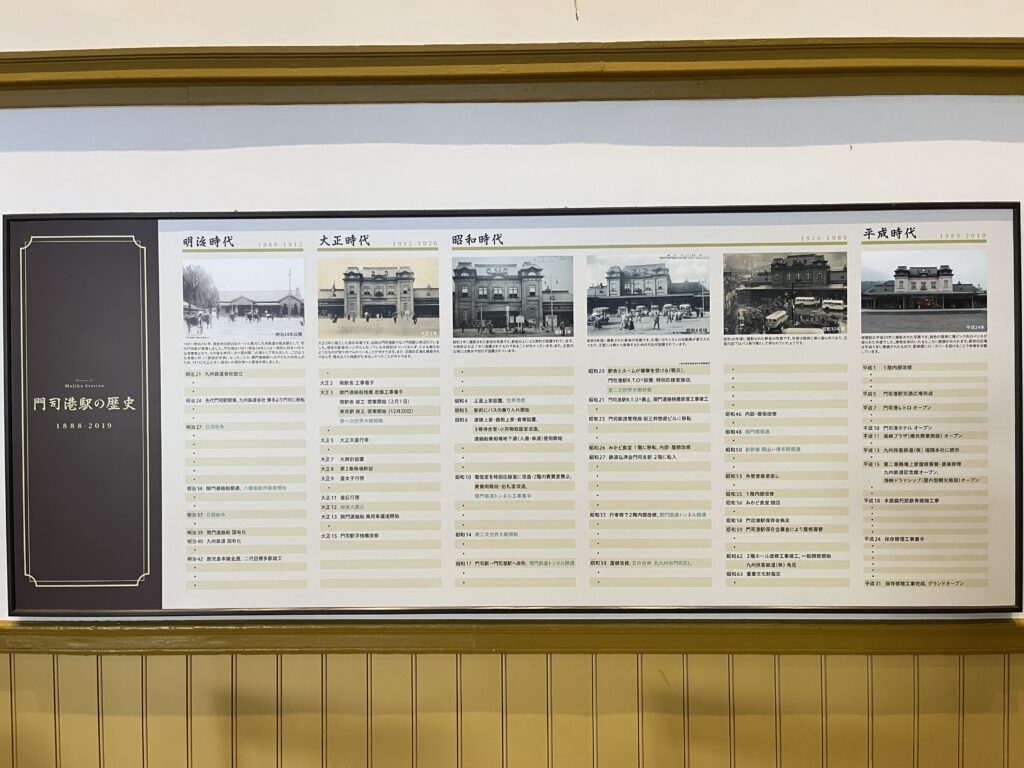
There is a panel that describes the long history of Mojiko Station from the Meiji period to the Heisei period.
The station building was constructed at the current location of Mojiko Station in the early Taisho period, but during the Meiji period, a different station building was located about 200 meters away from the current one.
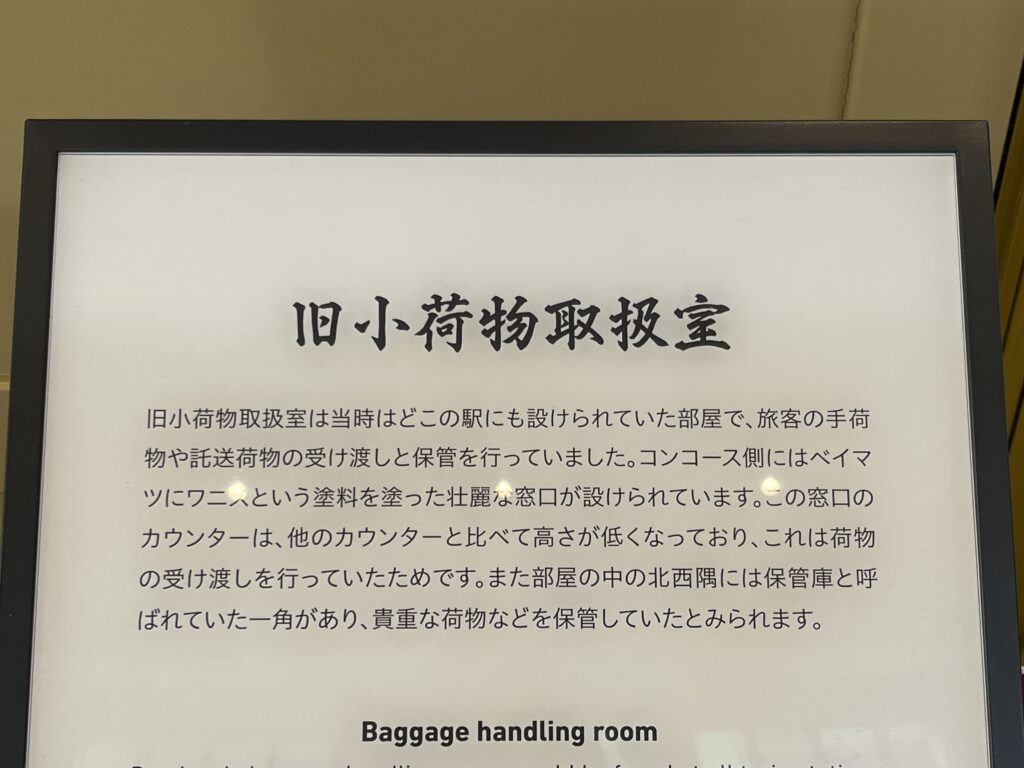
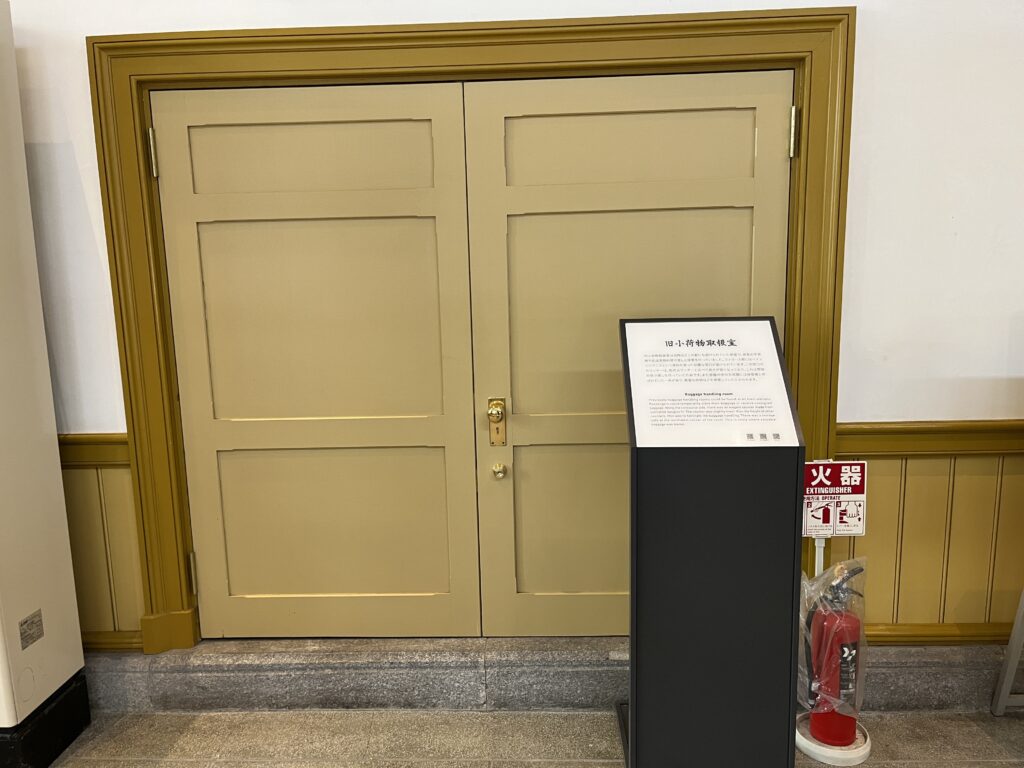
Inside the waiting room, a replica of the old parcel handling room that existed at the time has been installed.
At that time, every station had a luggage handling room where passengers could receive and hand over their baggage.
Highlights on the first floor of the station
Remains of the Kanmon Ferry Passage
If you go left (towards the sea) after exiting the ticket gate, you will find the remains of the Kanmon Ferry Passage, which connects the station to the port.
In 1902, the Kanmon Ferry was opened linking Kyushu and Honshu, and passengers who got off at Mojiko Station would travel through this Kanmon Ferry Passage to board the ferry to the port.
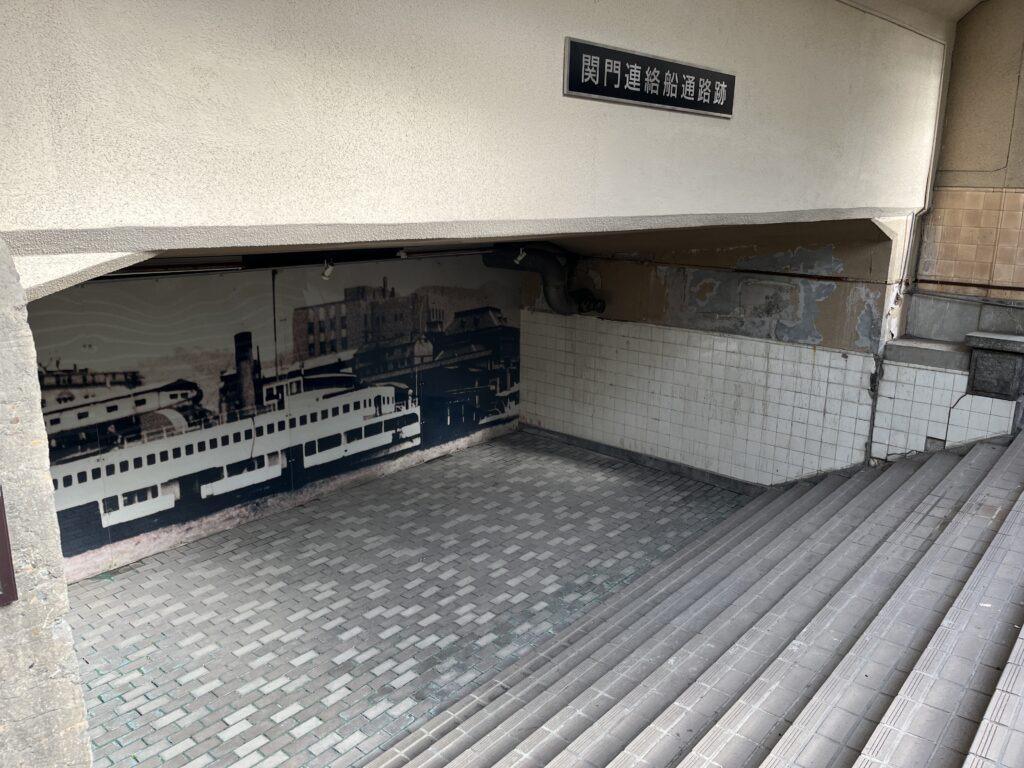
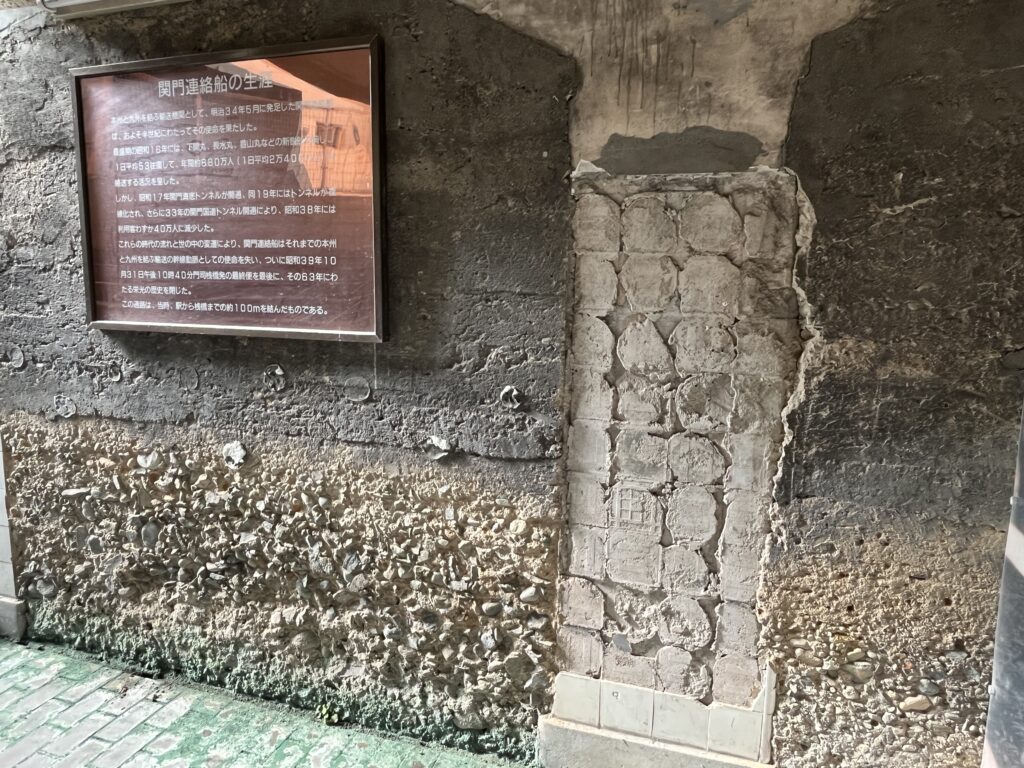
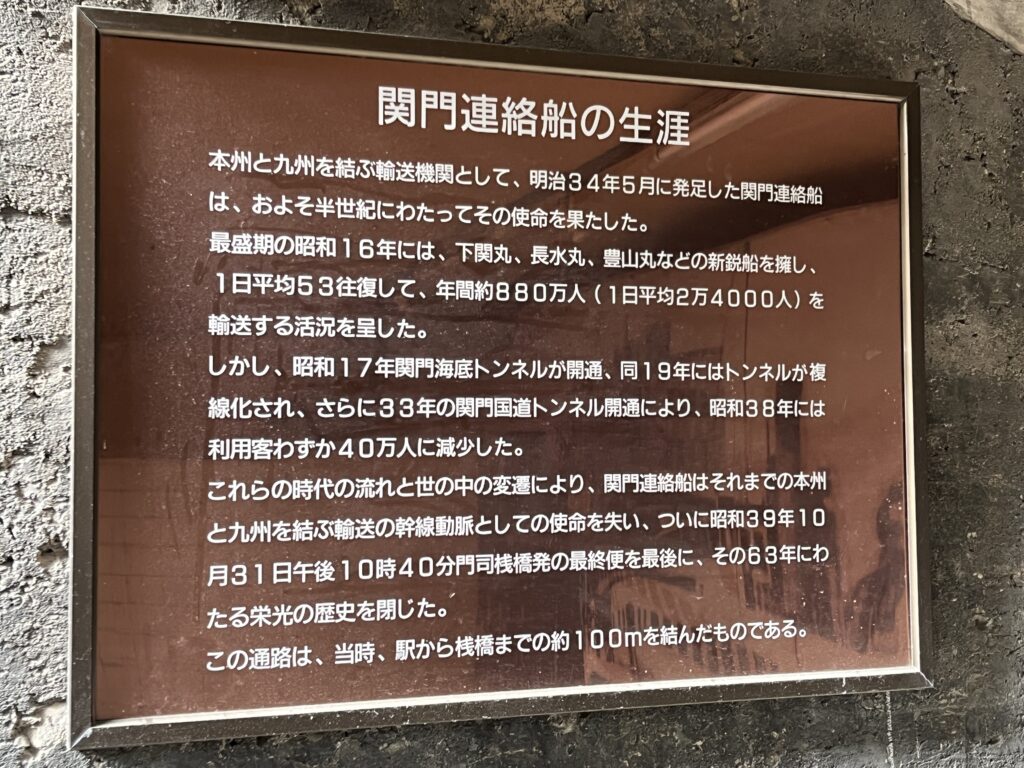
The Kanmon Ferry Passage was an underground passageway connecting the station and the port, but it is currently blocked off and cannot be used.
This is a spot where you can feel the history as the concrete from that time is exposed.
It’s like a ruin that shows the prosperity of that time.
Old observation hole
This is the remains of a checkpoint for travelers that was set up by military order towards the end of the war.
Because Mojiko Port was a port of call on foreign shipping routes, the Kanmon Ferry passage was an ideal place to watch out for suspicious characters during wartime.
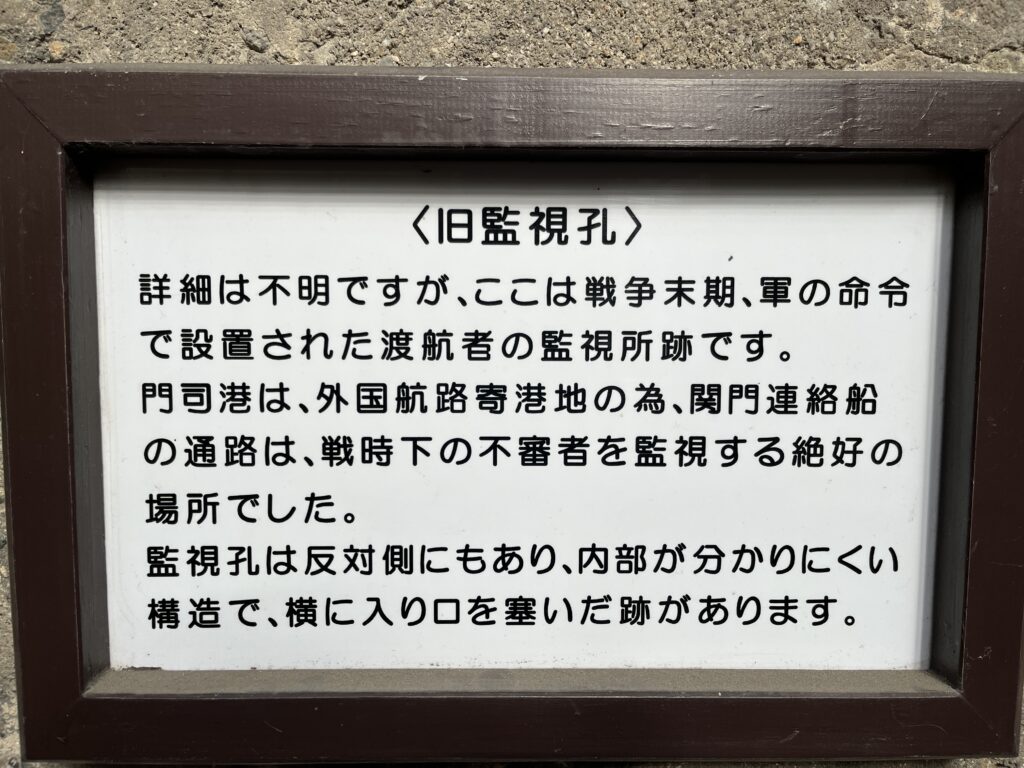
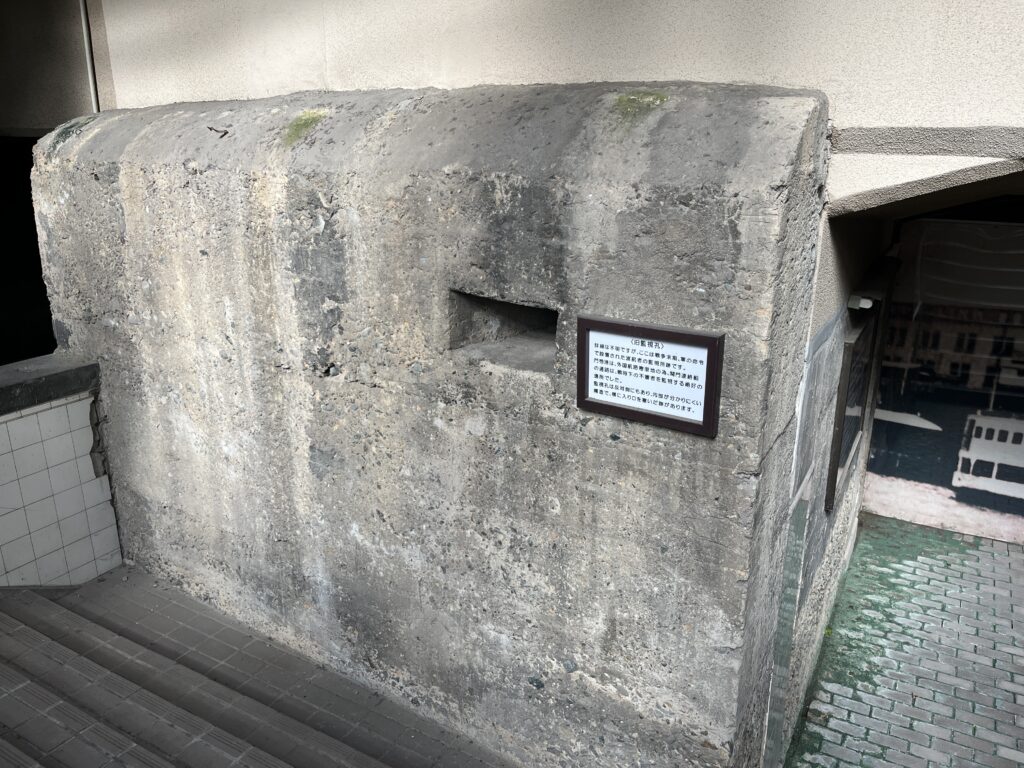
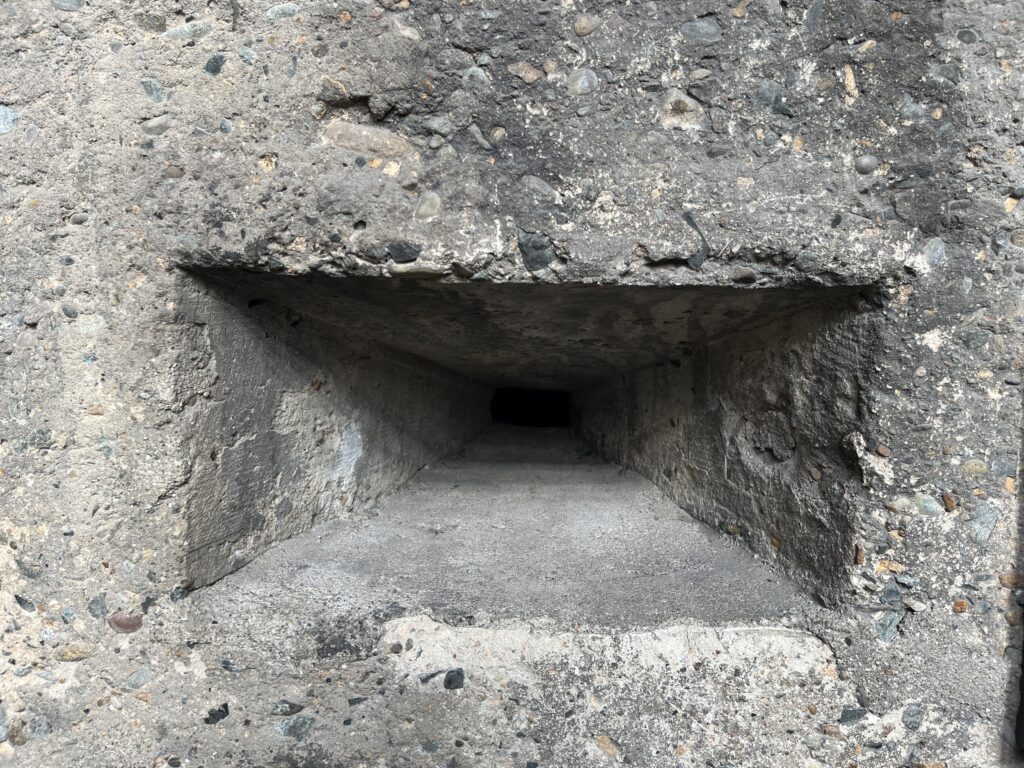
Apparently they were watching for suspicious people through a small, long hole carved into the concrete wall.
Mojiko Station still retains some of its wartime history.
There is also a history of war
Return water
Since ancient times, Moji has had a reputation for having clean, delicious water, and even when it was loaded onto ships making long voyages overseas, the water would not spoil for months.
This water supply, which was installed in the early Taisho period, provided delicious water to travelers.
One of the reasons why the Sapporo Beer factory was located in Moji may have been because of the clean water there.
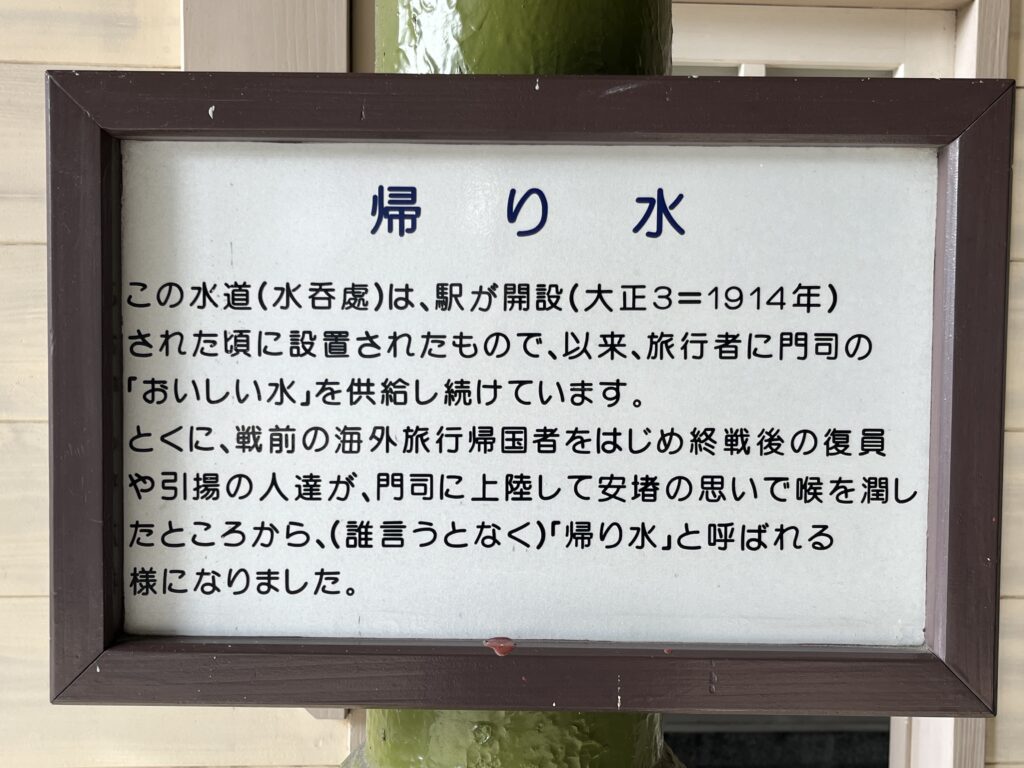
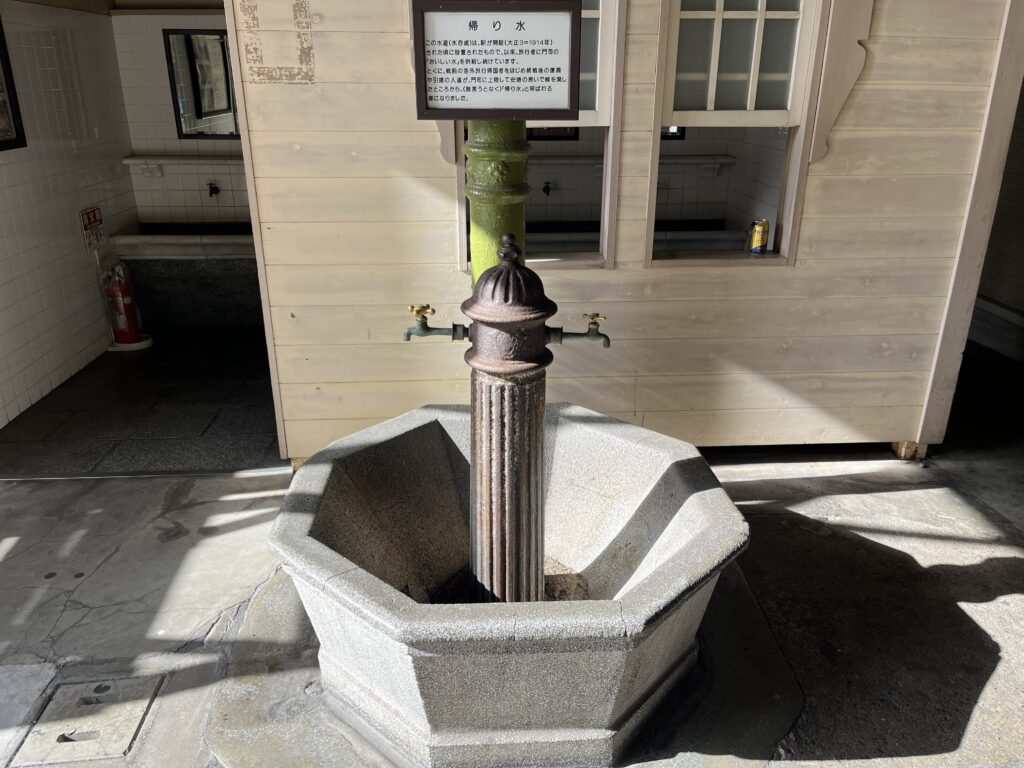
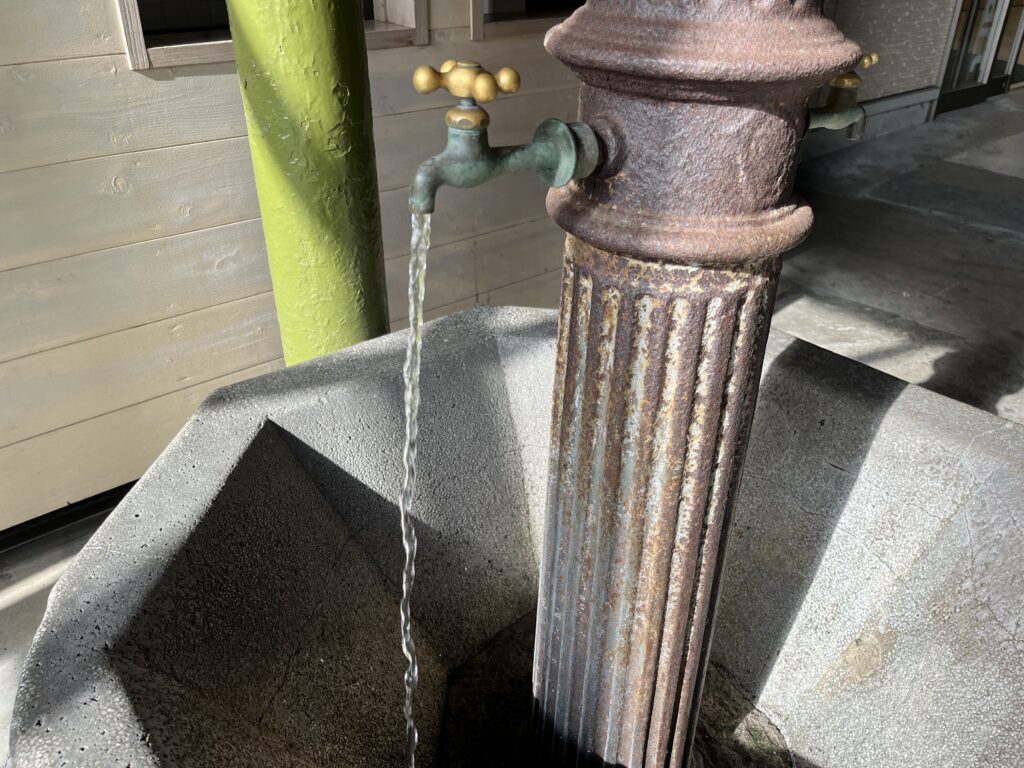
When you turn on the tap, water actually comes out!
Moji has had a reputation for clean water since ancient times.
Washroom
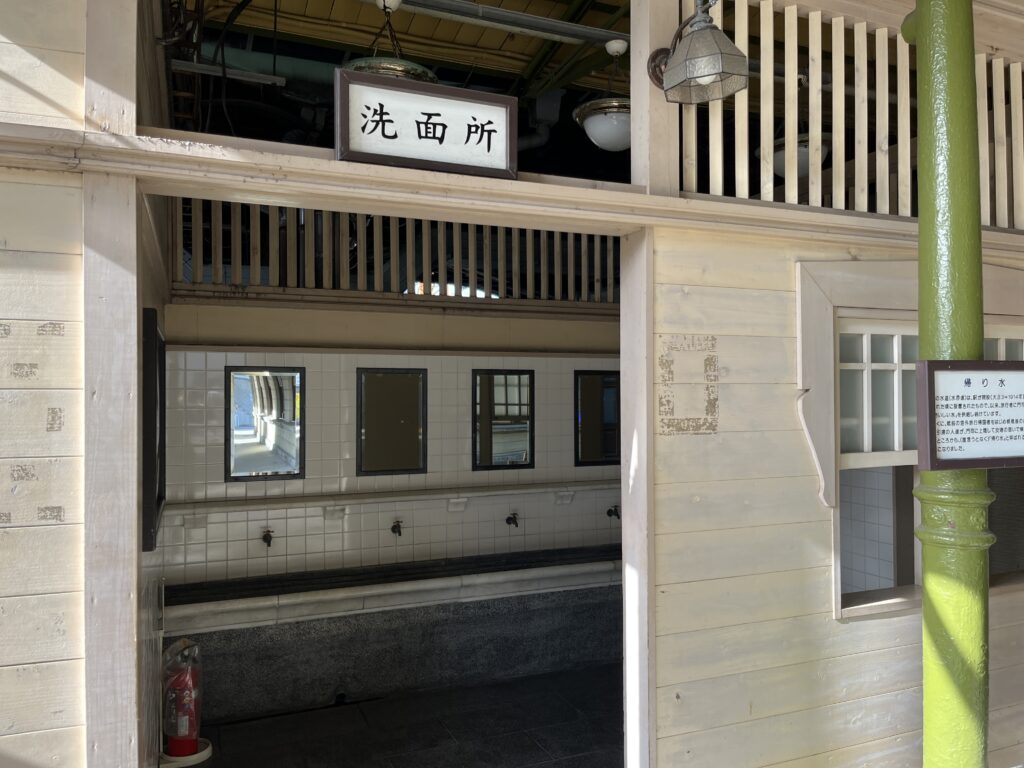
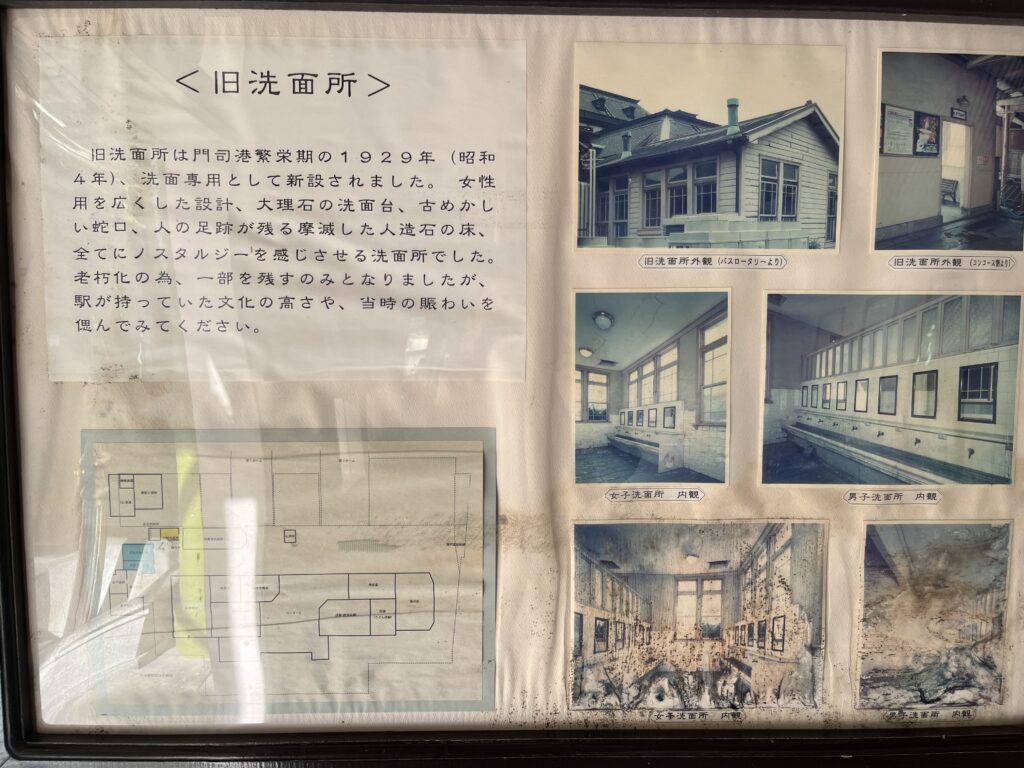
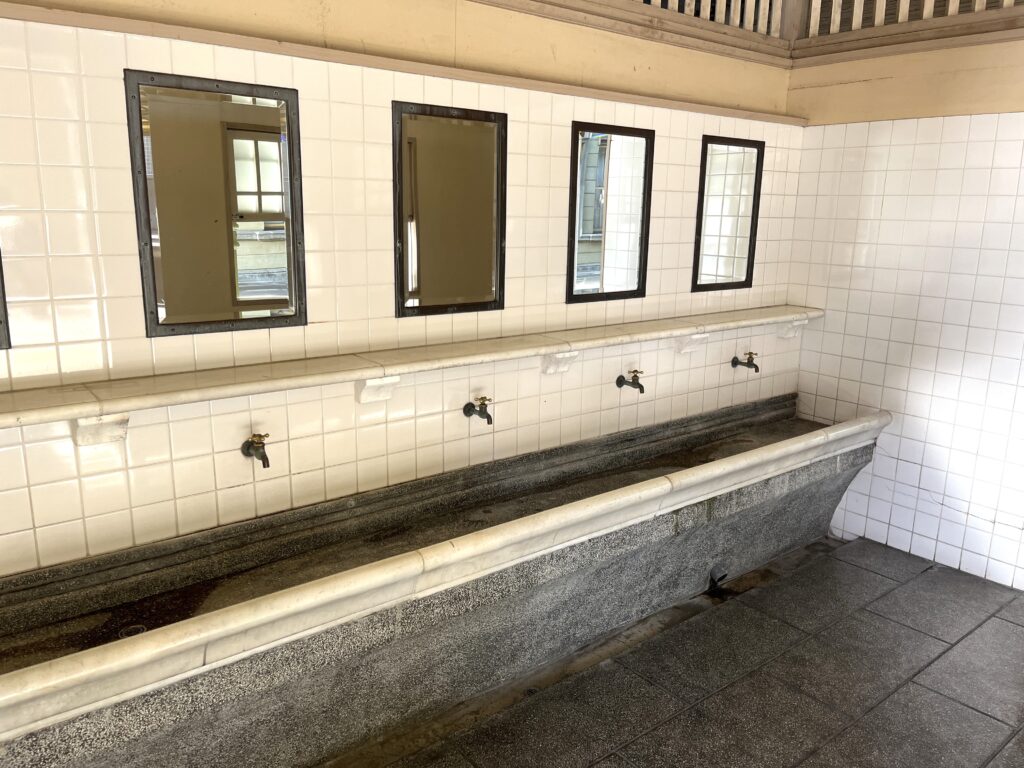

Apparently it was built specifically for washing hands at the bustling Mojiko Station.
Lucky water basin
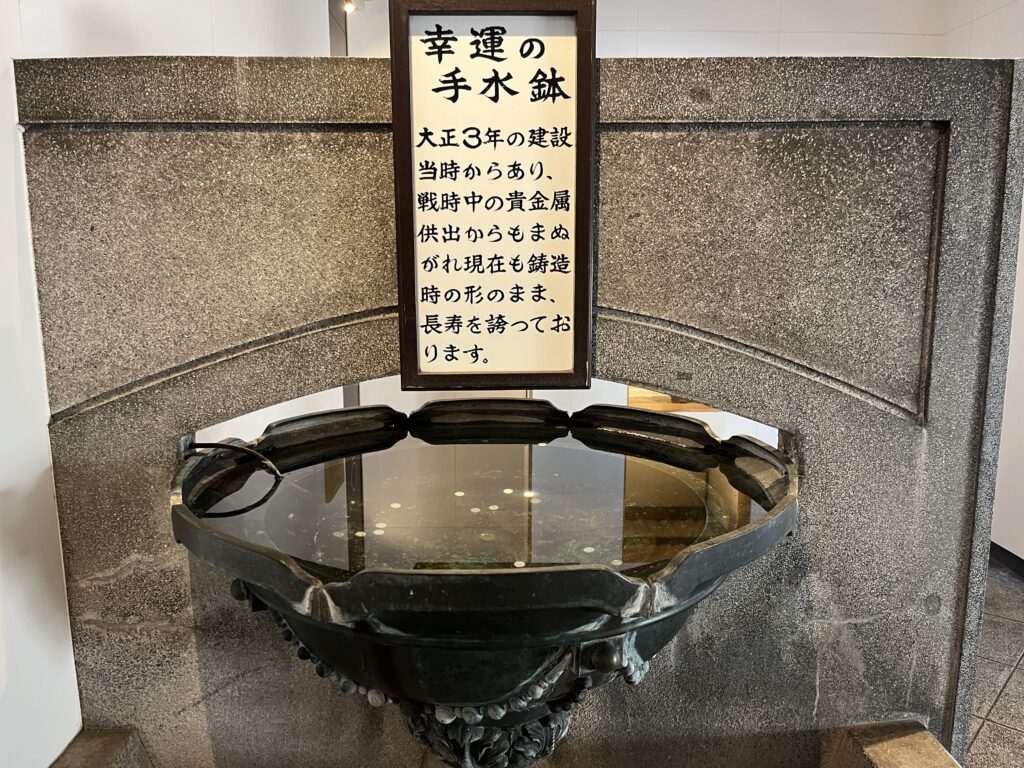
The “lucky water basin” is at the entrance to the toilet.
Former front upper house
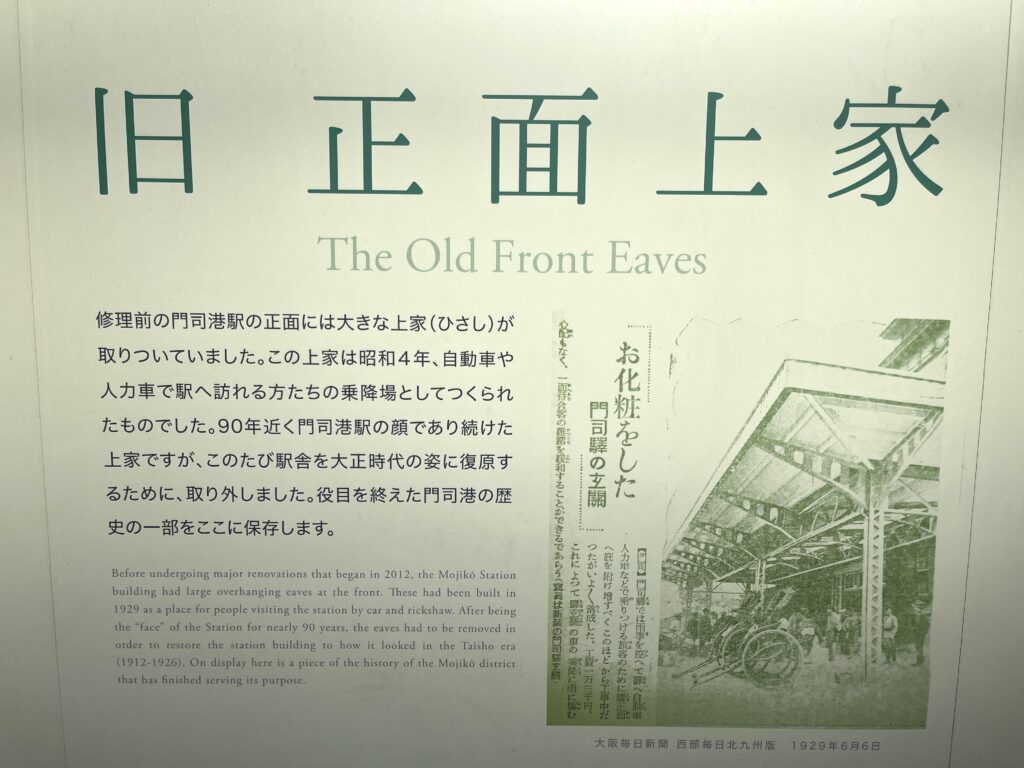

The upper building that stood in front of Mojiko Station for 90 years during the Showa and Heisei eras has been preserved.
Former automated telephone booth
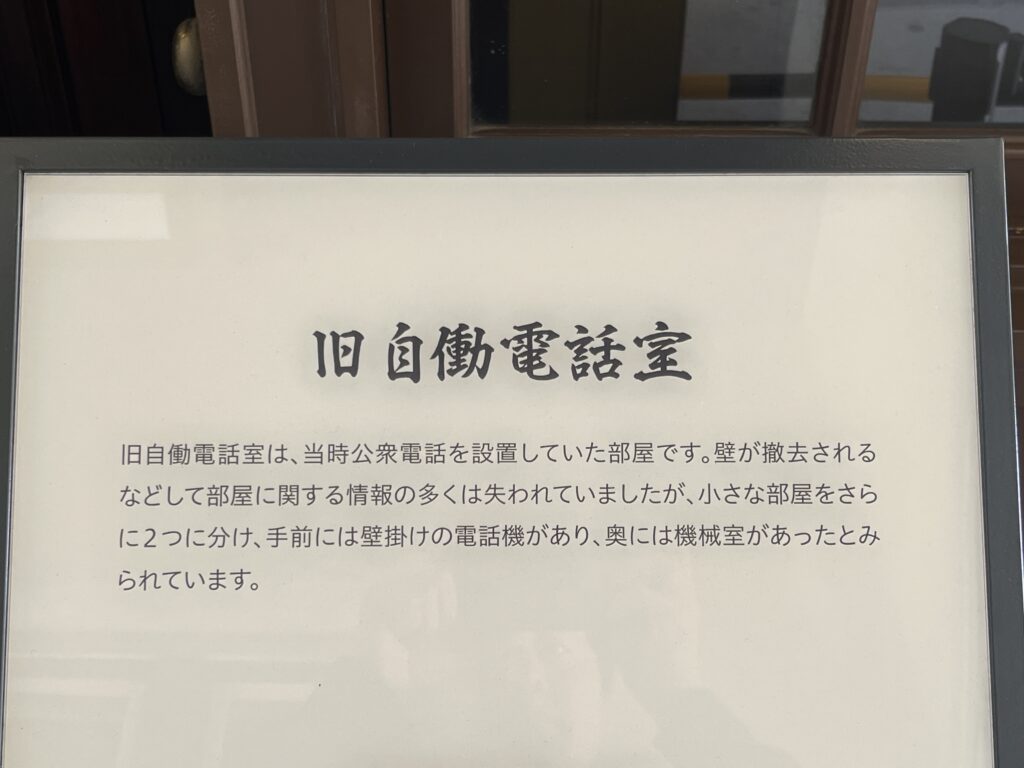
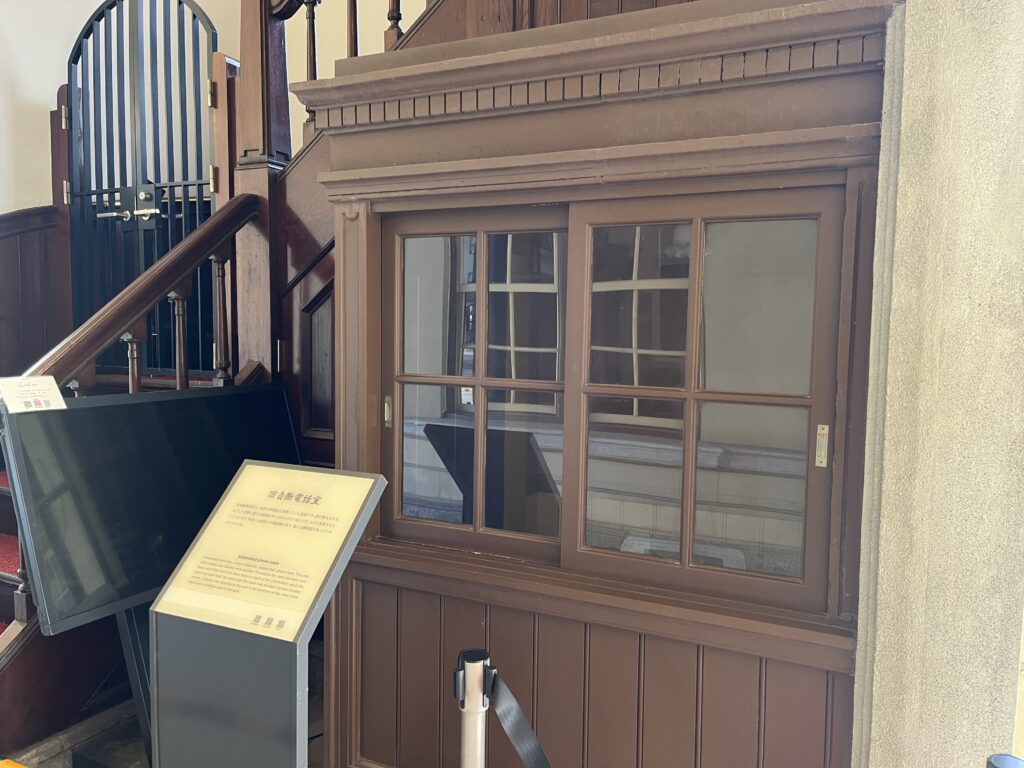
Exhibition room
In the exhibition room on the first floor of the station building, you can see valuable old items and documents that tell the history of Mojiko Station.

A variety of exhibits telling the history of Mojiko Station
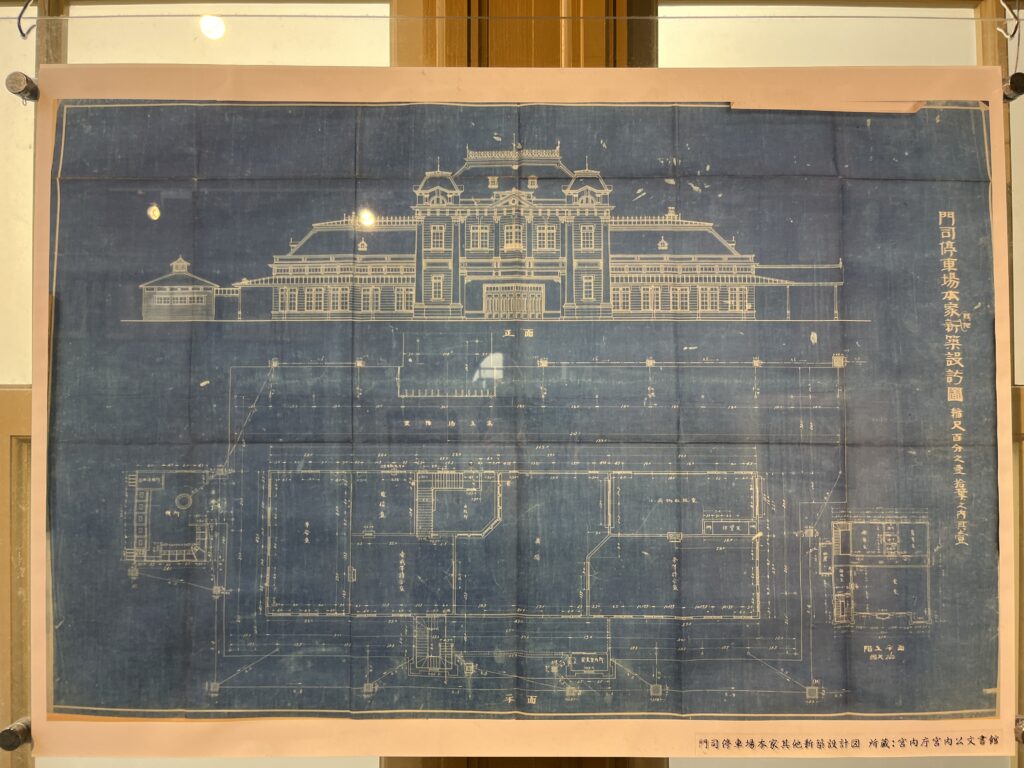
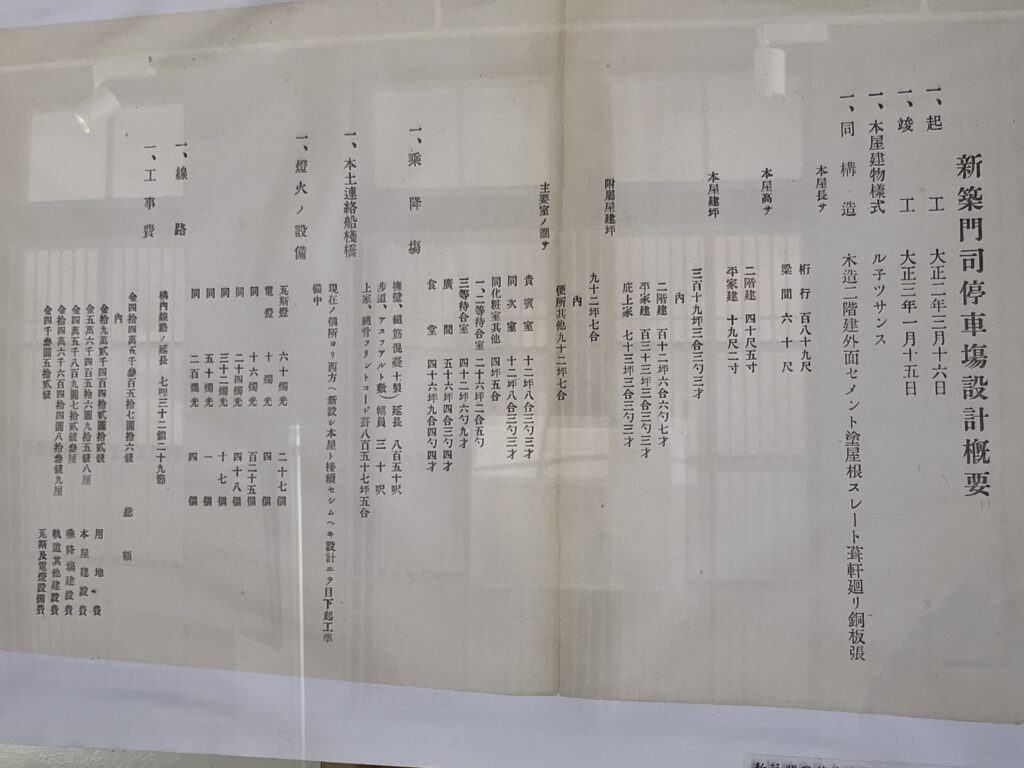
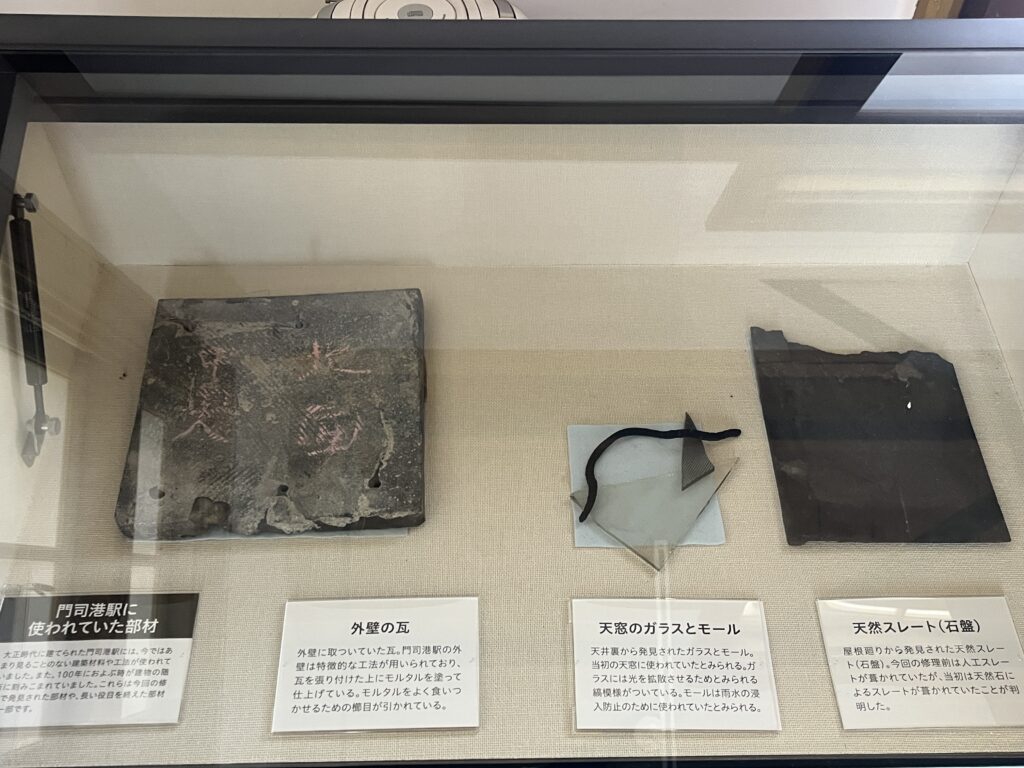

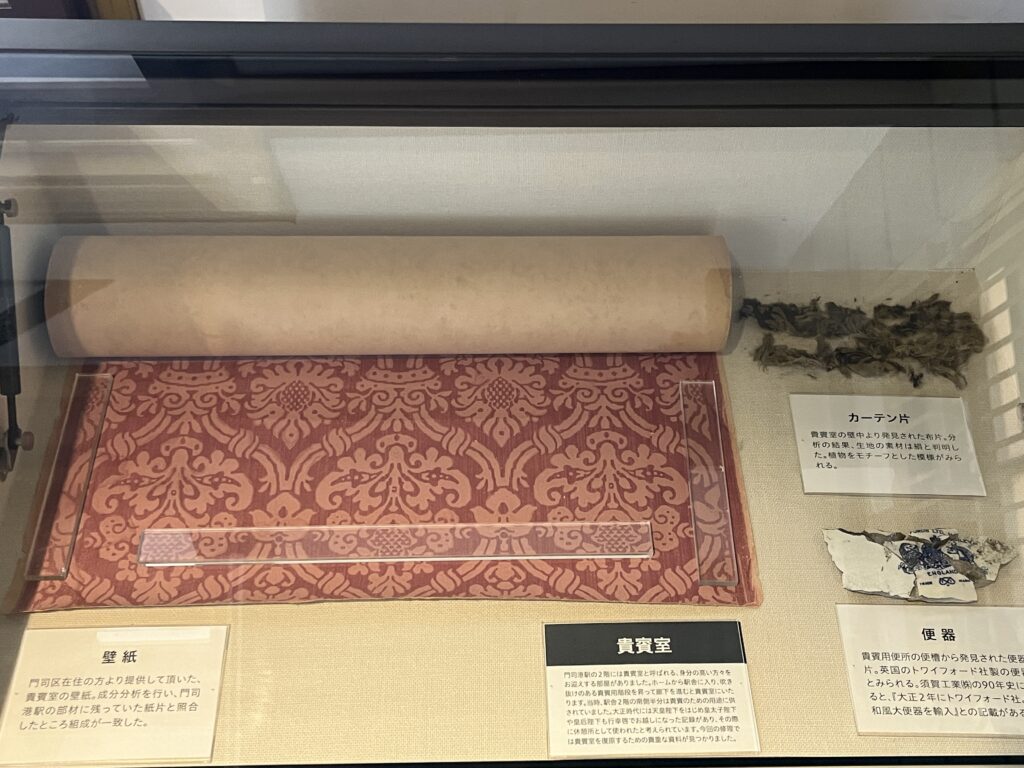
Sauce bottle from the “Old Mikado Restaurant”
The sauce bottle had been stored in a warehouse belonging to Mikado Shokudo, a restaurant located on the second floor of Mojiko Station.
It’s a large bottle the size of a square meter.
This sauce bottle had been stored in the Mikado Shokudo storehouse for 60 years until it was moved from the second floor to the first floor in 1951.
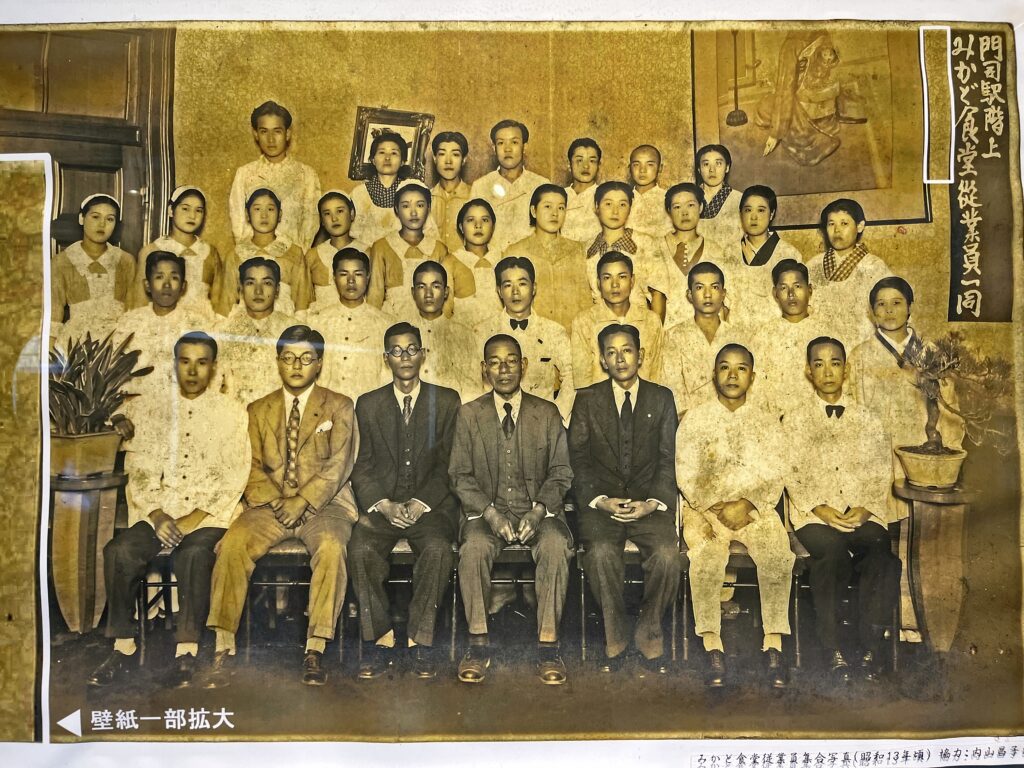
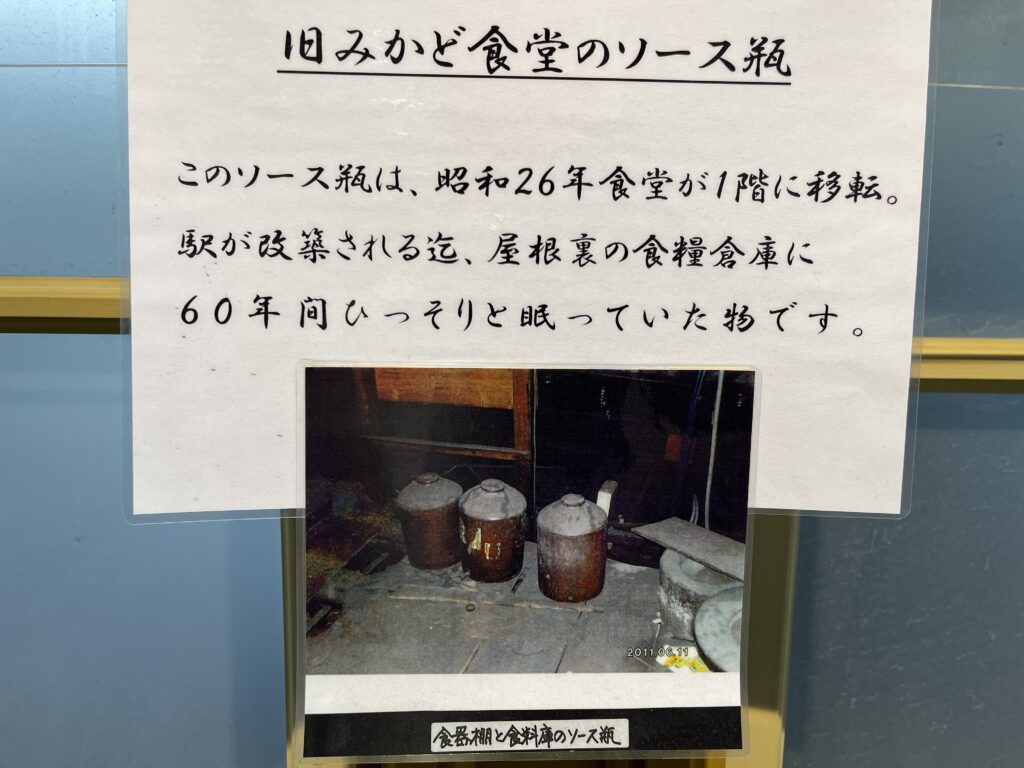
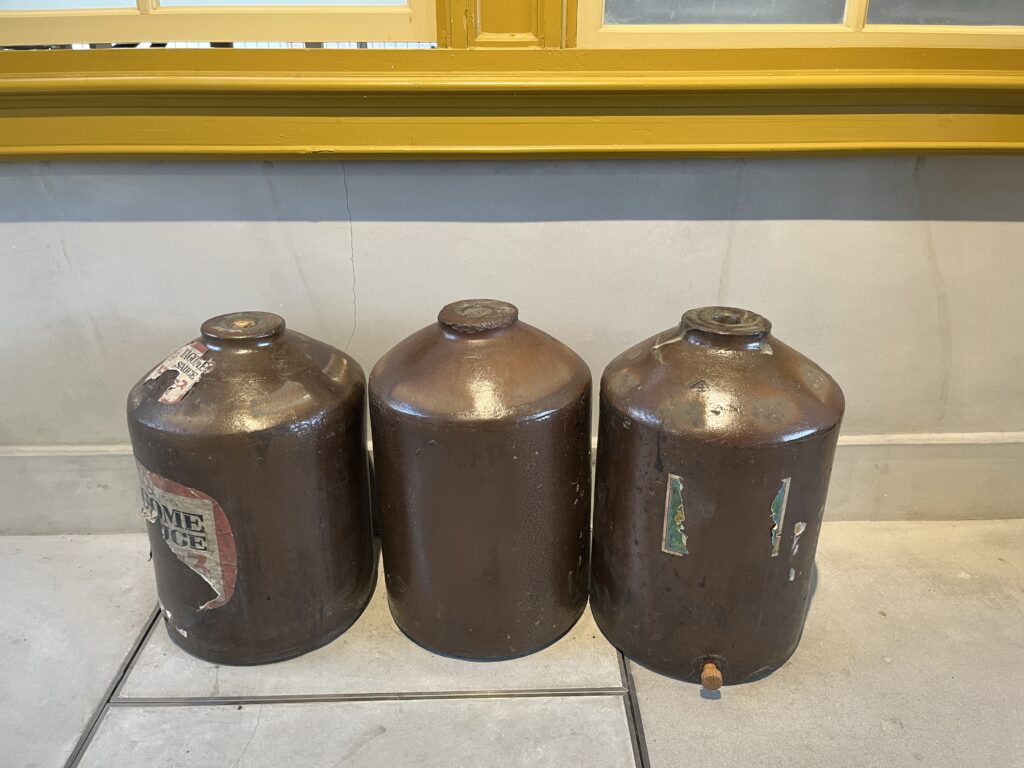
There are many items and documents on display that tell the history of Mojiko Station.
Station building 2nd floor

You can go up to the second floor of the station building through the door in front of the ticket gates on the first floor.
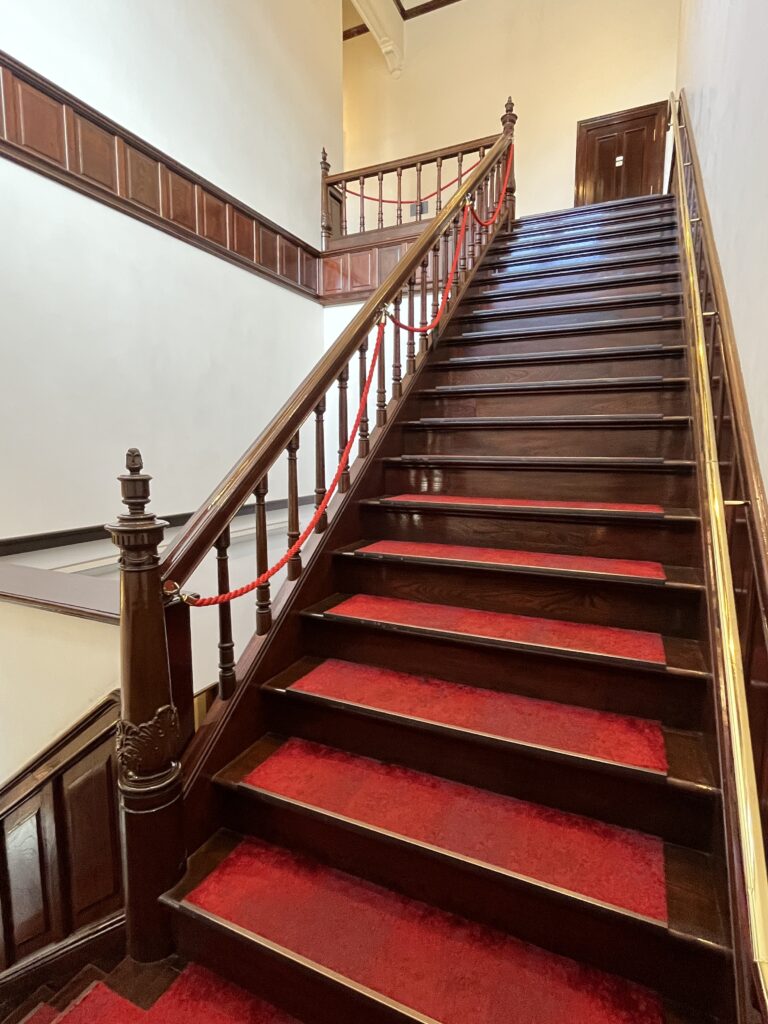
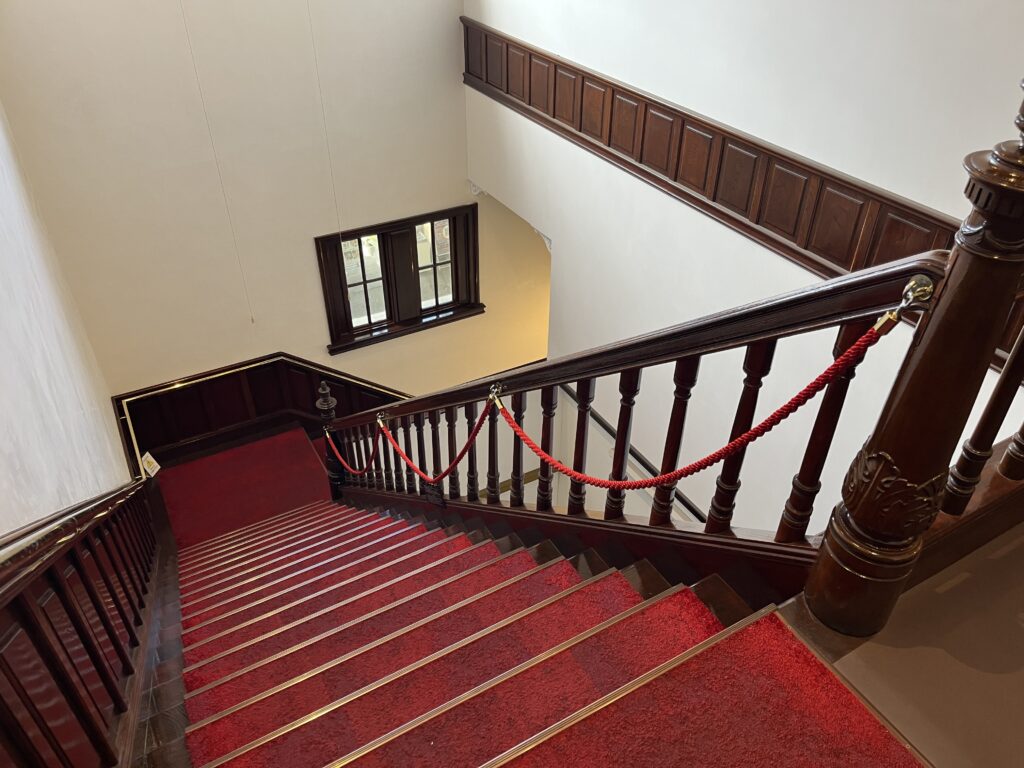
A red staircase with a heavy wooden handrail.
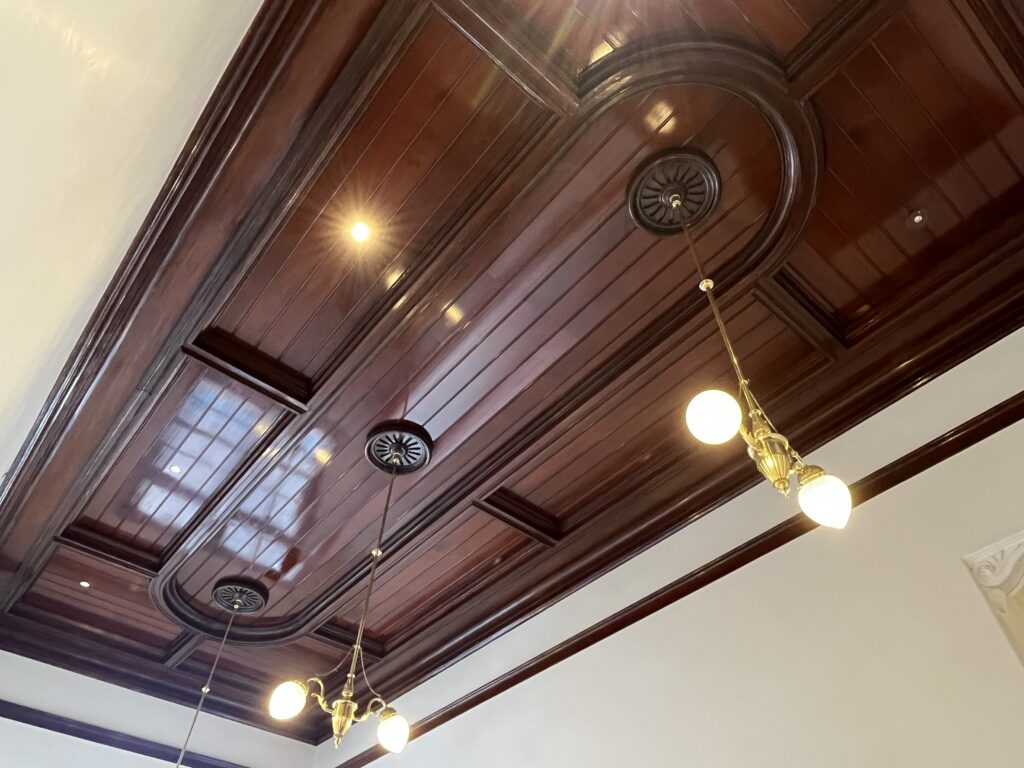
The ceiling is made of heavy, glossy wood.
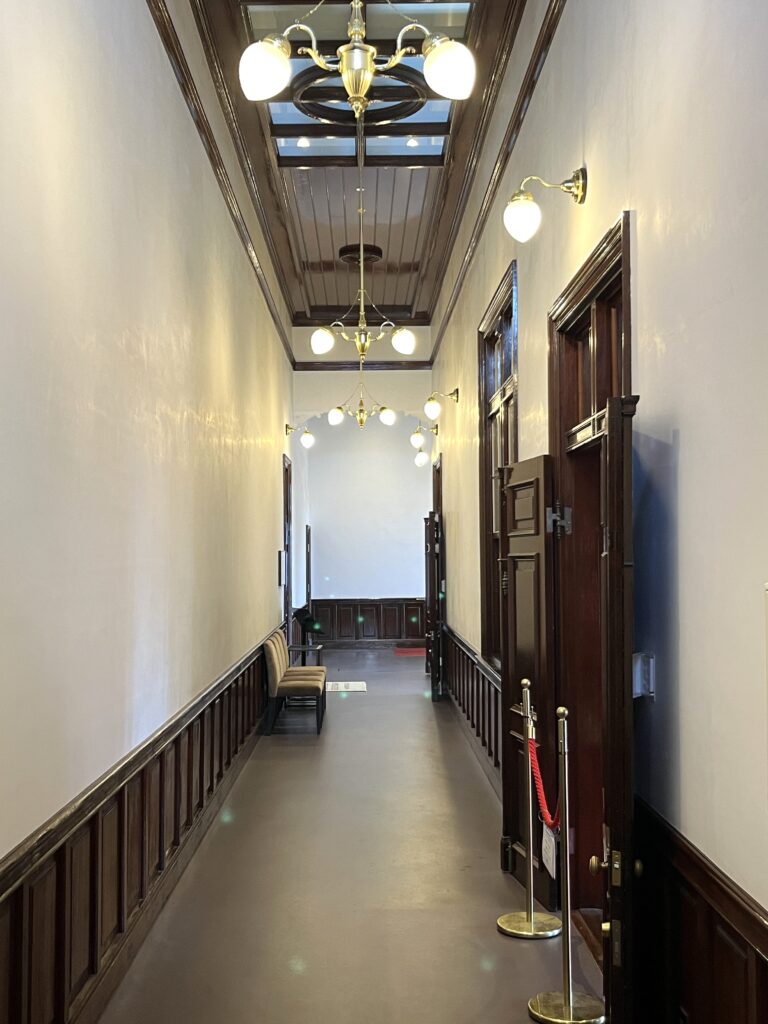
The lighting in the hallways is gorgeous.
The staircase, hallway, and ceiling are all luxurious and stately.
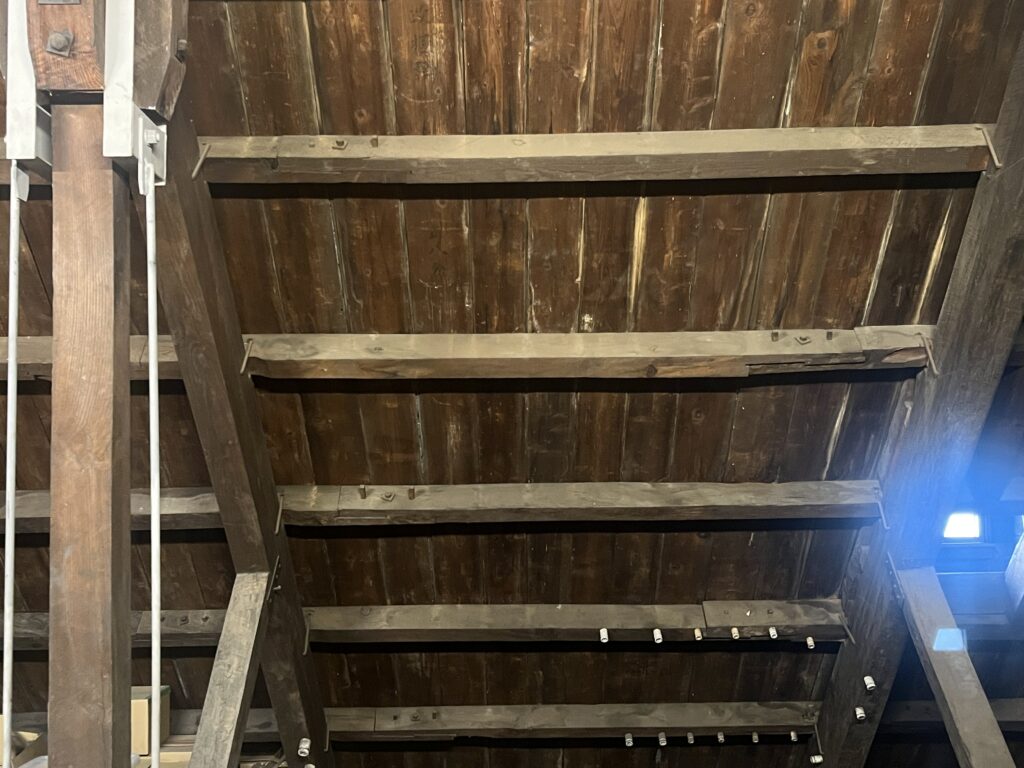
There is a window in the corridor on the second floor of the station building that allows you to see the construction of the attic.
This is the attic of the wooden Mojiko Station.
Former VIP Room
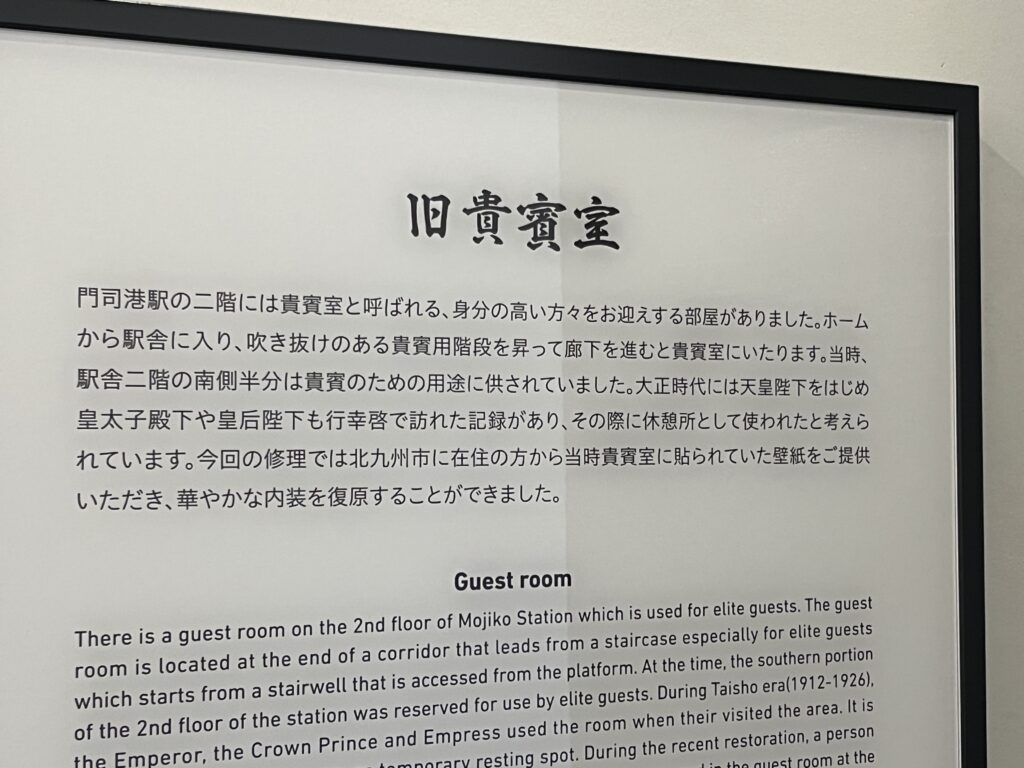
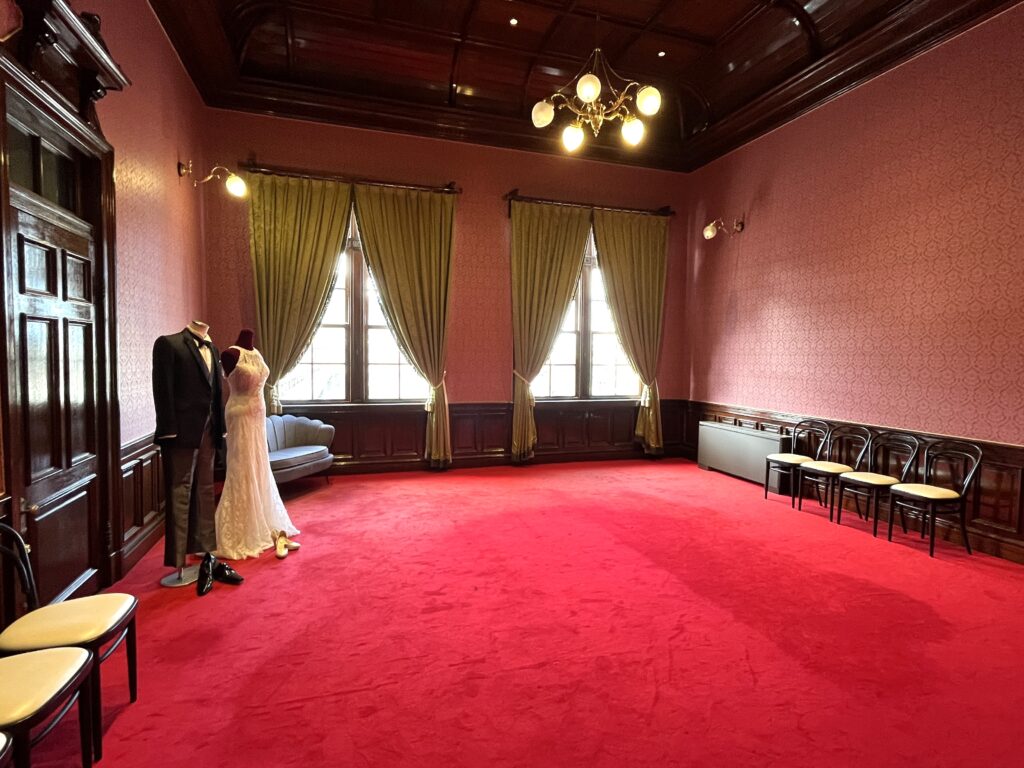
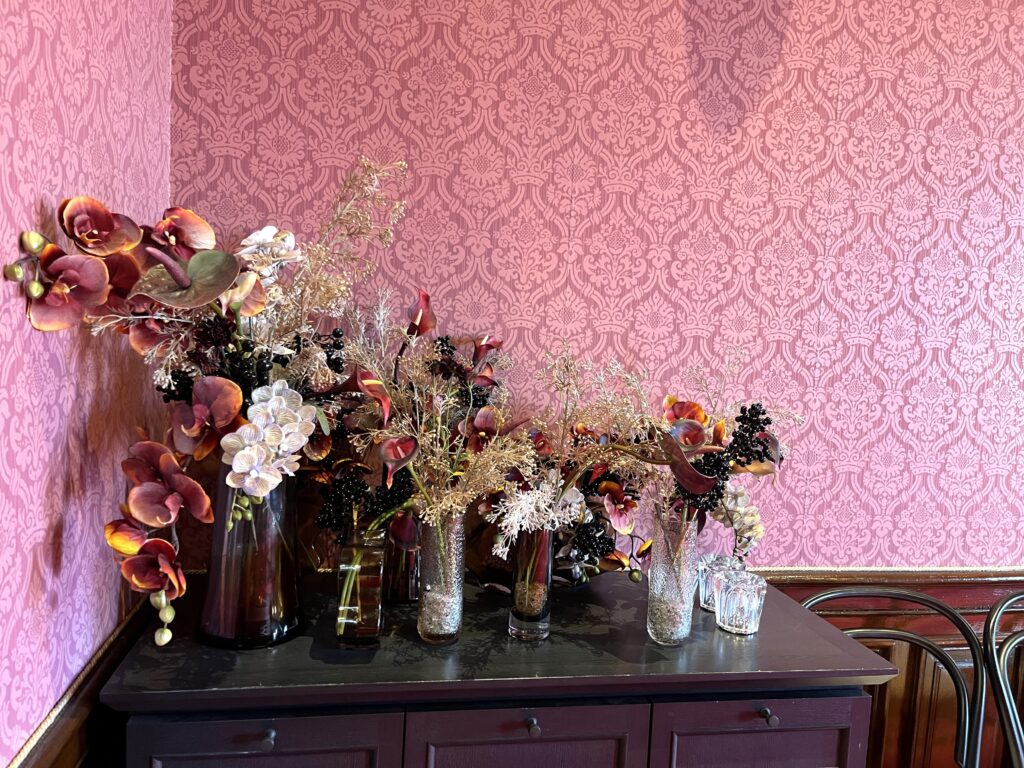
The “former VIP room” was used to welcome people of high status.
The red carpet is laid out, making it gorgeous and elegant!
During the Meiji and Taisho eras, Mojiko was a big city and many people came from overseas.
Former Next Room

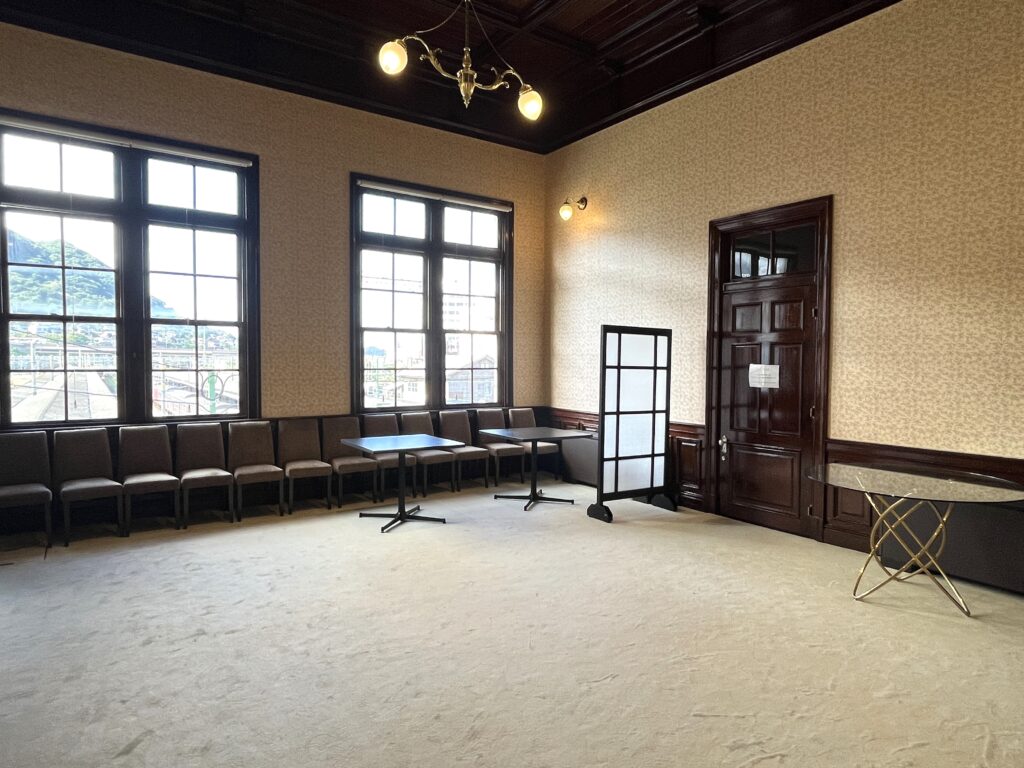

The room next to the former VIP room is the former side room, where VIP attendants waited.
From the window of the former second room you can see the platform at Mojiko Station.
Former dining hall

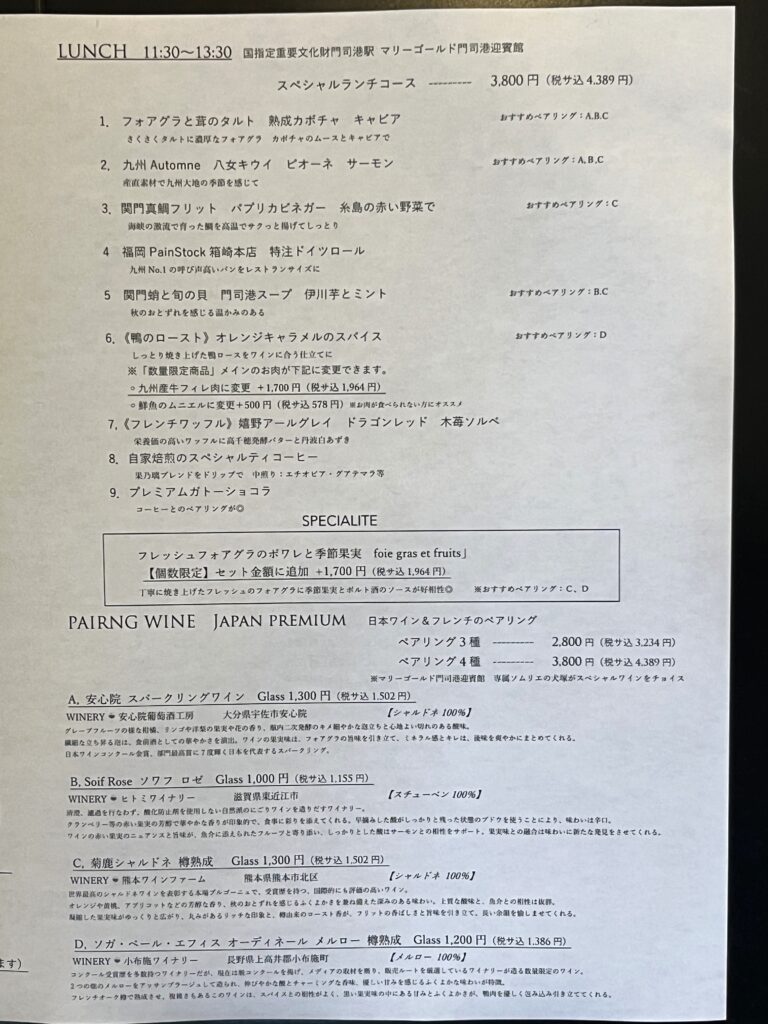
At that time, there was a restaurant called “Mikado Shokudo” on the second floor of the station building.
When the station building was restored to its current form from the early Taisho period in 2019, Mikado Shokudo was also restored and in operation, but now a different restaurant is in operation.
The restaurant is actually open
Family Mart inside the station

There is a Family Mart next to the ticket gate on the first floor of the station.
The brown sign has a calm design that is typical of a tourist destination.



Family Mart also sells lots of Mojiko retro souvenirs.
You can also buy souvenirs from Mojiko at Family Mart
Conclusion
Mojiko Station was the first train station building to be designated as an Important Cultural Property by the government, and has been restored to its original condition in 1914 (Taisho 3), giving it a Taisho-era romantic feel.
The impressive station building combines a retro feel with a luxurious atmosphere, making it a must-see spot for any Mojiko retro sightseeing trip.
Just the exterior of Mojiko Station is a sight to behold, but there are many spots throughout the station that tell the story of the station’s history, which flourished during the Meiji, Taisho, and Showa periods, so be sure to go inside and take a look at the details!
● The station building has been restored to its original state when it was built in 1914 (Taisho 3). The retro feel of the building is truly impressive.
● The first railway station building to be designated as an Important Cultural Property of Japan
(the only station buildings designated as Important Cultural Properties are Mojiko Station and Tokyo Station)
● The northernmost station in Kyushu. There is a “zero mile marker” marking the starting point of the Kyushu Railway.。
● Numerous records of the history and prosperity of Mojiko Port
● The Starbucks in the station is super retro
There are many tourist attractions within walking distance of Mojiko Station, so let’s go around the famous places from Mojiko Station♪
There are also many restaurants serving Mojiko’s specialty, “yaki-curry,” around Mojiko Station!
I hope that the above information will be of some help to those planning to visit Mojiko Retro Area.
If you are sightseeing around Mojiko Retro, be sure to also visit Mojiko Station!
See you soon!
Related Posts
